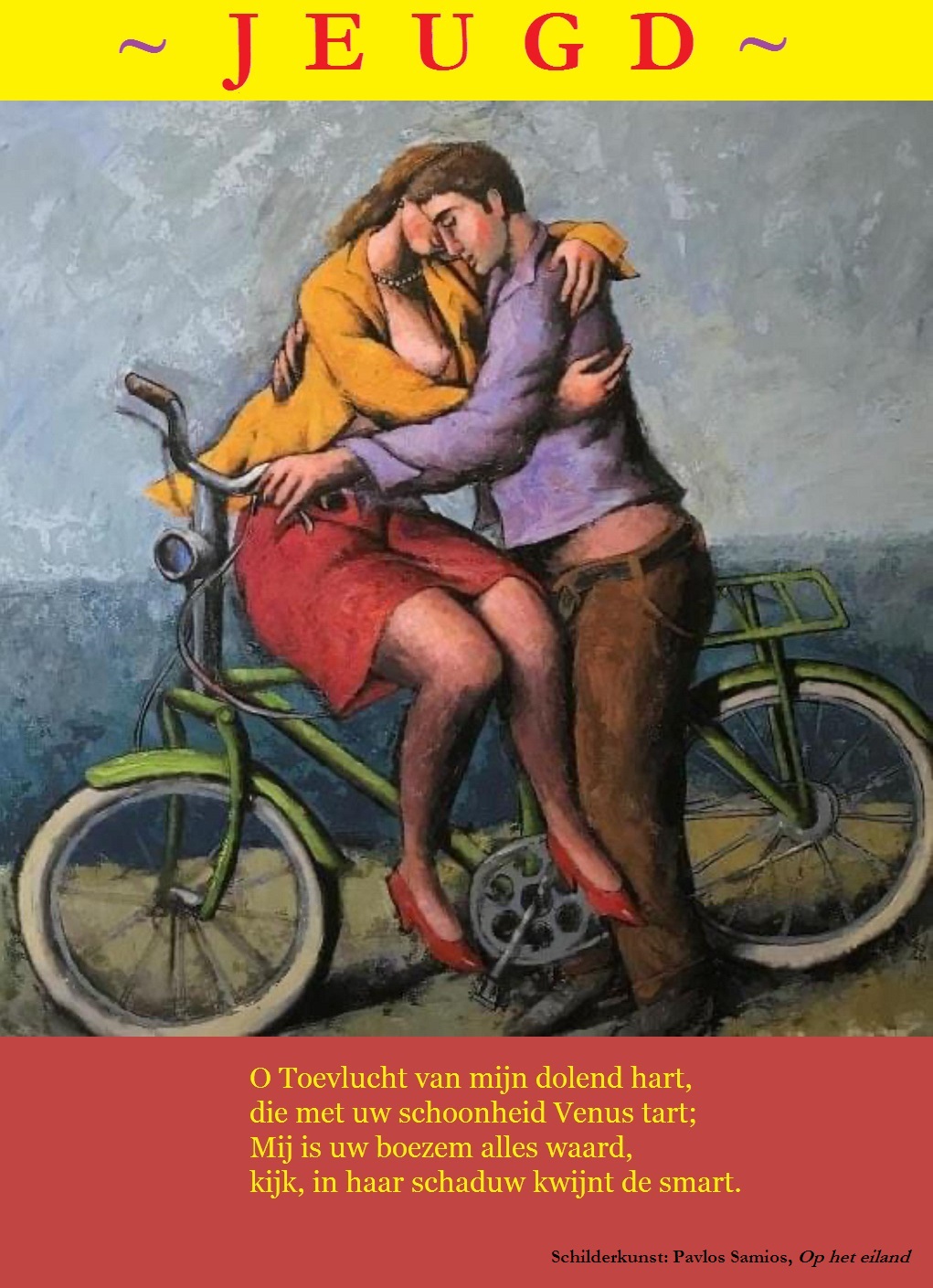EYHM – Elastique Brut V1
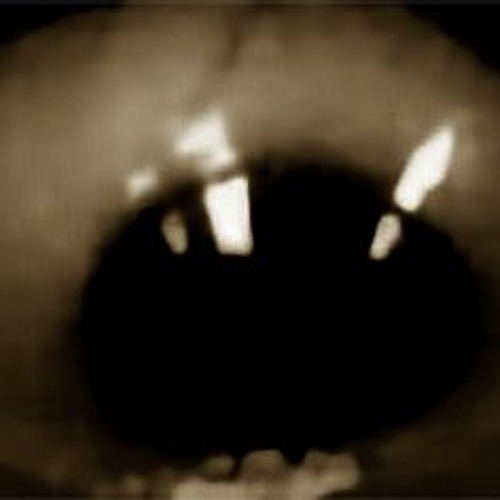
berichten zonder categorie of over gematerialiseerde ellende of over literatuur of erger


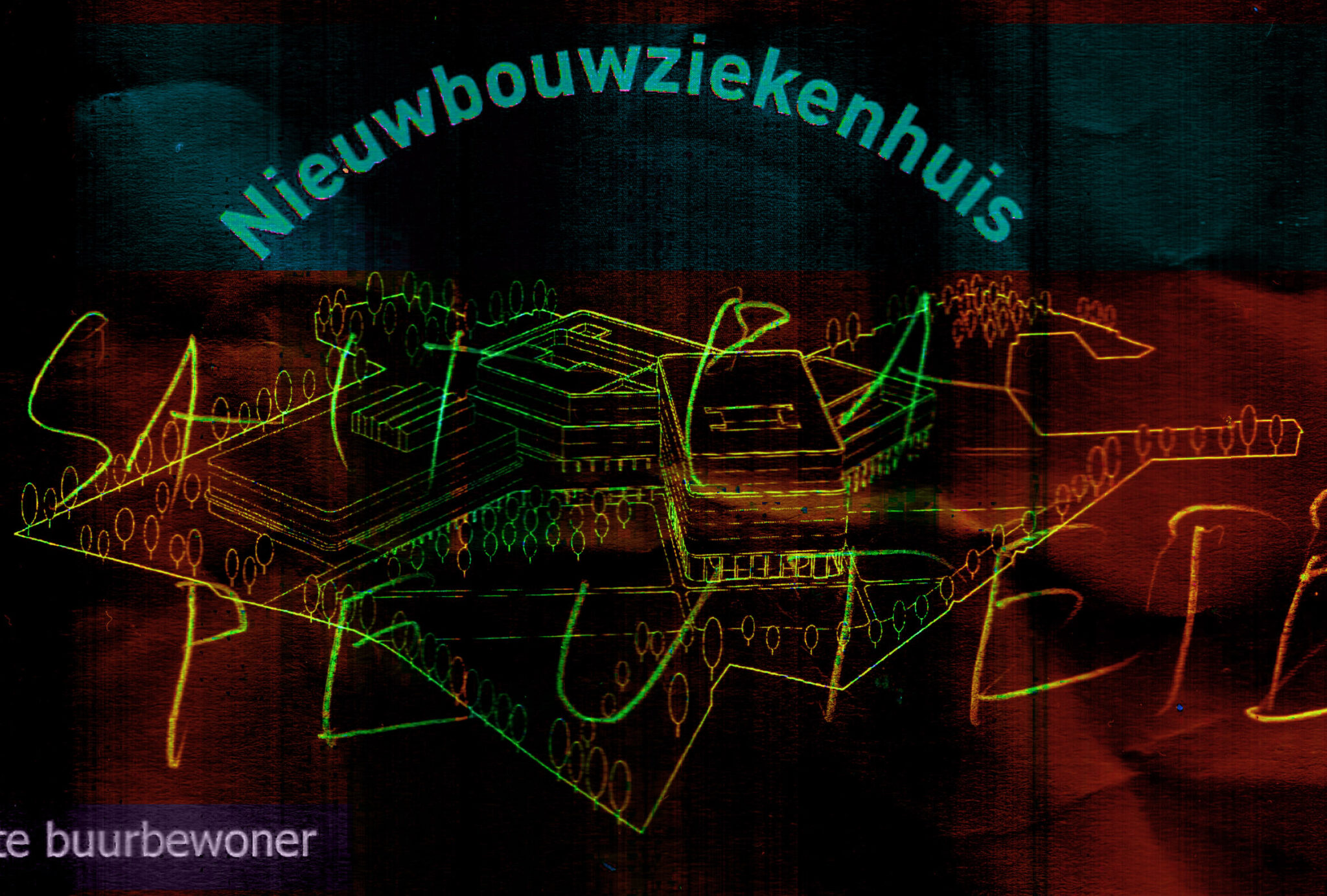
ik worm mij in uw vlakte heer en kronkel even zo ik kraak mij de wervels heer en wriemel naakt en graatloos ik wurm mij uit de gaten van de tranen ik sla het stof van de miljoenen van mij af ik vraag u naakt zoals ik ben met rondom mij het zwart van uw aanwezigheid en in uw oog bewijs van mijn afwezigheid zolang nog ik vermag zo naakt van u te zijn in het volle woeden van uw groot gelijk,
want,
ik worm mij in uw vlakte heer en kronkel even zo ik kraak mij de wervels heer en wriemel naakt en mergloos ik wurm mij uit het weeë slijk van vergeefs vergoten tranen rondom mij ik sla het stof van de miljoenen doden van mij af (herhalen kan hier wel?) ik vraag u naakt zoals ik ben niets van hen is vreemd aan mij niets van mij is vreemd aan hen: hoe dan, wat anders kan ik zeggen dan: ‘gun mij uw vloek doe heil aan hen, ik zal uw vazen wassen in de hel.’
Judah Conchetroux, Waremme 2/02/2022 @ 7:08
first of 15 songs generated by images made by Jim Leftwich and sent to me by mail. made with Melobytes, a free online AI Image to Sound app and the free Virtual ANS 3.0 synth
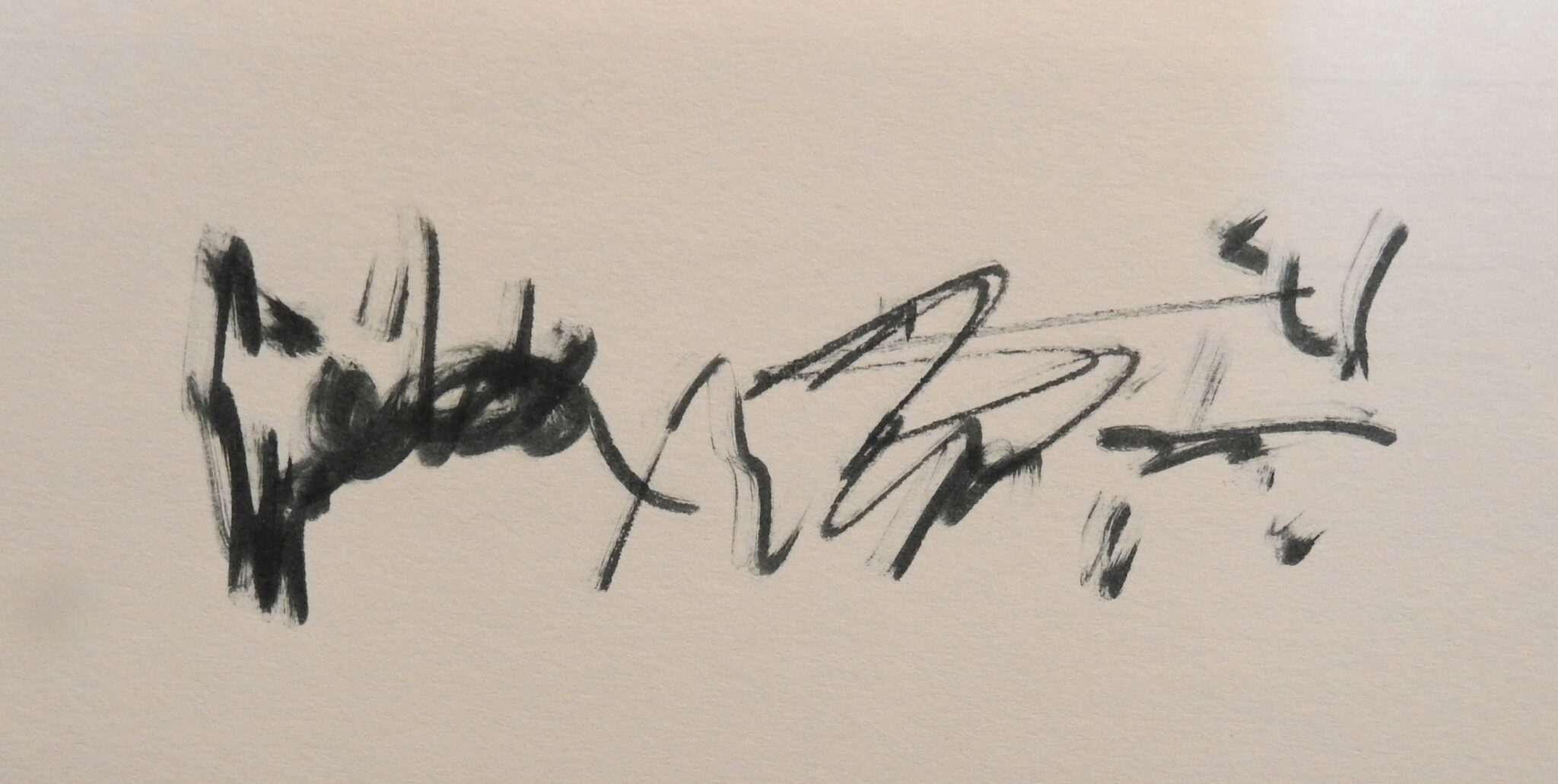
//the dv.app’s coding is rusty still, it’s been out of the loop for 10 years!
var IMG_input = “DSCN5983.JPG”;
var IMG2MIDI_url = “https://melobytes.com/en/app/ai_image2sound”;
var params =(50, 55, Major, 62, 3/4, No, Yes);
var MIDI_app =(Ableton);
var recFile=new File(Audacity, record);
var genFile= new File( dv.genMIDI( IMG_input, IMG2MIDI_url, params, WAV);
var arrangFile= new File(dv.arrangMIDI, Ableton, morotic);
//’Ableton’ is the app used for the arrangement, ‘morotic’ is one of available modes/moods of arrangement of the dv-app
new Session()=dv.session.start ();
//begin recording session, that’s the hardest part, getting the morotic dv.app to do anything..
dv.start.recording (Audacity);
ANS. read ( IMG_input , looped);
// have ANS read the image in a continuous loop
dv.play(arrangFile);
//once you got it running things start to happen! remember that!
dv..monitor(recFile);
//have dv monitor the mixing output to the recording file
dv.master(recFile);
//all it did was Normalising the Audacity output
dv.publish (recFile, WordPress);
//now that wasn’t too hard was it?
dv.comment (“frack of, will you”);
dv.exit();
———————————————————————————-
All files are released in the
Public Domain CC 0 1.0

Zou je dit overvol kunnen noemen? Een zaaltje met twee lange tafels en twee ramen.
Hij weet het niet. Hem lijkt het alvast goed gevuld en toch lijkt hij de afwezigen te willen monsteren. Afwezig op de begrafenis van hun eigen moeder!
Hij zou ze zijn broers moeten noemen maar komt er niet toe. Het deert hem overigens niet echt, wat kan het hem schelen. Zijn eigen dochters en de dochters van beide afwezigen maken het zaaltje overvol.
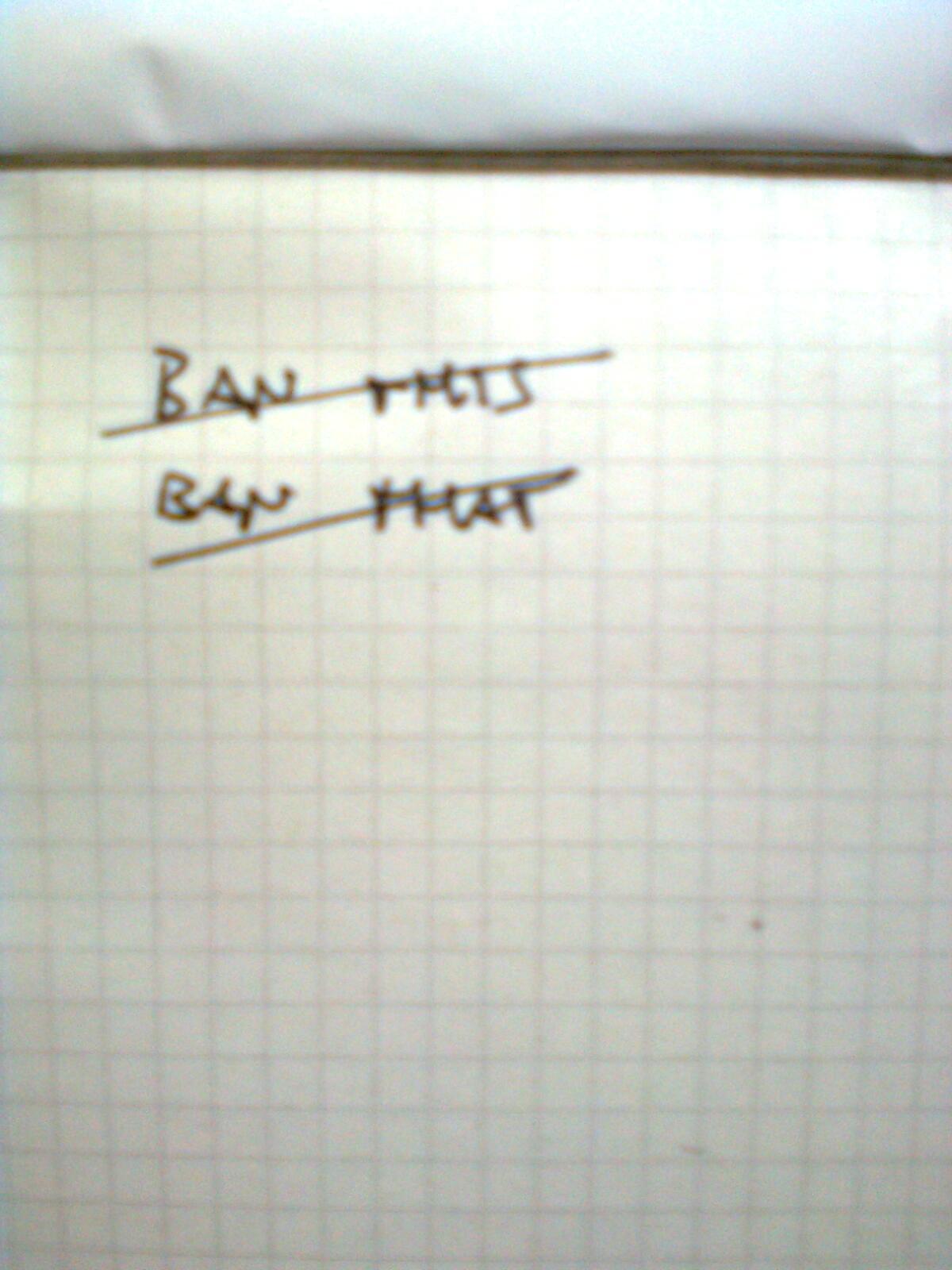
Zonder in toevalligheden te willen vallen en vooral om dat te vermijden, hebben we enkele parameters bovengehaald en toegepast op de gegevens zoals we die verzameld hadden en opgeslagen.
Als eerste parameter geldt de afstand. Vijftig kilometer wordt als maximum aangenomen. Er is geen minimum.
Met de leeftijd wordt nauwelijks rekening gehouden. Worden uitgesloten: onder de twintig en boven de vijfenzestig.
Tweede dwingende parameter is de bereidheid tot binnen om daar thuis te werken, met uitsluiting van wie daar niet toe bereid is. Sommigen verhelen dit aspect. Toch ontsnappen ze niet en vallen ze door de mand.
De andere parameters spelen losjes weg: een, twee of drieweegs, waarbij drie de voorkeur geniet. Of de hoedanigheid zoals daar is: eronder. Onder de leuke duim schuilt de grote luim. Deze formule en formulering definieert deze parameter.
Op deze basis komen drie kandidaten uiteindelijk in aanmerking. Het is haast een blinde gok om de volgorde te bepalen. Rust echter brengt behalve roest soms ook inzicht. De derde dag zagen we dat een heel erg goed zou kunnen zijn en haalden die aan.
Het zou een juiste gok blijken.

van ochtendgil tot avondval
van middernacht tot overal:
u jaagt uw brave nieuwe leden
naar de huurkazernes van de dood.
u loont hen met uw gouden kettingzegen.
u schildert uit in uitgelezen kerkhofgroen
de uitgeflitste kruisweg van hun levens
in het doffe teken van uw nijd.
u slacht per ader en gelaten maar
geen cijfer kan uw dorsten laven.
uw venusheuvel jeukt en vloekt.
uw startschotplannen staken plof.
uw afscheidsgroeten blaken waar
u welkomstwoorden had voorspeld.
kak. uw draaimol wiekt in gaten
de dolle waanzin van uw leiden
wordt nu rede die geen lijden kent.
o droog doorprikte wolkendromendok,
o foute rekenregel in de wereldregen,
hou uw waterlanders nog even in de tank
vul uw vreetkanaal met grijze stronk
van kersenpit en levende garnalen:
de toekomst is maar even om de hoek
de krant gaan halen met vandaag er in.
aanhoor de jubilates van de vrede
het komt wel goed zolang het nu
u toch nog even kan in leven laten.
(javel is uiteindelijk, denk ik, nog steeds
het beste middel tegen rot en stank).
—dv & juda conchetroux i.v.m. simon vinkenoog
Het wonder van de zonsondergang.
Dieporanje schijf,
lamp, barstend van protuberansen.
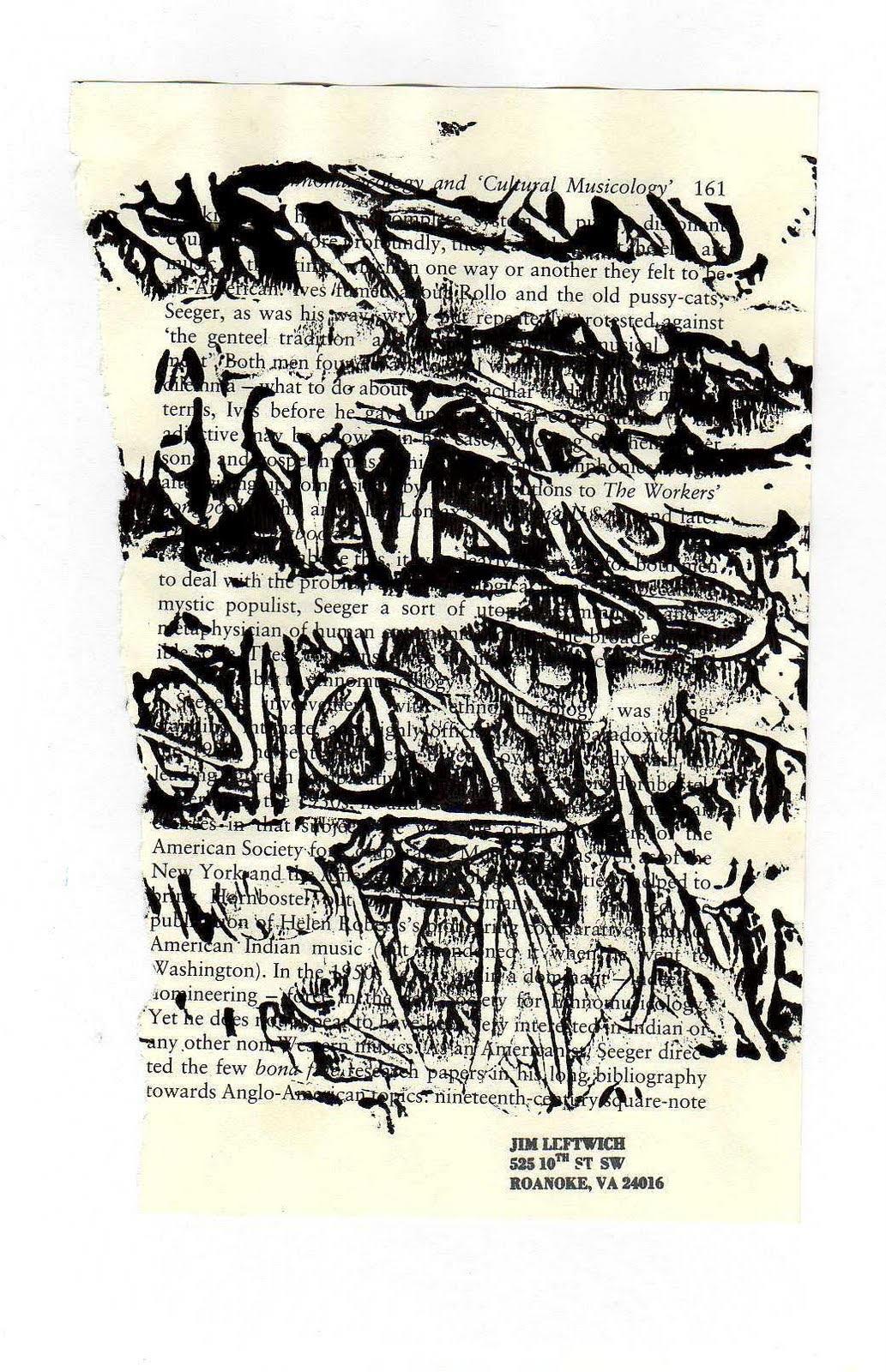
[This interview was previously published in the 8th Issue of
Buzdokuz Poetry Theory Criticism Magazine,
see buzdokuz.com ]
Hello Jim. Thank you for agreeing to interview me. Let me start with my first question: I wonder how you met asemic poetry. Can you talk about it?
In 1996, I made a group of fairly extreme experimental textual poems and sent them to a friend who was primarily a visual poet. He warned me that I would wind up making asemic writing if I continued to pursue such extreme experiments. That was the first time I saw the word “asemic”.
In 1997, I intentionally made some illegible handwritten poems. I sent them to John M. Bennett, who called them “spirit writing”. The following year, Tim Gaze published in his Asemic Series a small booklet of my illegible handwritten poems entitled Spirit Writing.
Could something really be a-semic? What is the connection of asemic poetry with meaning? Is it meaningless to be wordless?
My position has always been that there is no such thing as asemic writing. All writing has meaning, and all mark-making has meaning.Practitioners of asemic writing are involved in an aspirational practice.I have never accepted the definition of a-semic as poly-semic, which is very close to the definition offered by Wikipedia. (”With the non-specificity of asemic writing there comes a vacuum of meaning, which is left for the reader to fill in and interpret.”) We may as well assert that asemic writing is the opposite of itself.
In January of 1998, I sent an email to Tim Gaze in which I stated the following: the asemic text would seem to be an ideal, an impossibility, but possibly worth pursuing for just that reason.
In June of 2011, I posted the following comment to the ASEMIC Google Group: there is no such thing as asemic writing.in fact, there is no such thing as asemic anything. everything is readable, ie., can be and will be given meaning.the asemic is an unattainable ideal.in striving toward it, many mutations of writing and drawing (and other practices: photographing, to name but one) will come into being.this is the value of the asemic. working with asemia (attempting to write it, attempting to read and/or not read it) is a training exercise, and the products of that training exist as documentation of the process.
How can we read asemic poetry? Can you evaluate asemic poetry in terms of legibilty-illegibility?
Asemic writing was never meant to encourage any kind of reader-response engagement.
Asemic writing is a kind of writing-against-itself. It is intended to thwart the production of meaning, even the process of collaboratively constructed meaning-building.
The struggle in the production of asemic writing lies in the attempt to produce a meaningless text or text/image or quasi-calligraphic drawing, and failing, continually, in every attempt.If that specific struggle is not present in the production, then what is being produced is not asemic writing. It is, most often, either abstract visual art, or some variety of visual poetry.
The struggle in the reception (reading) of asemic writing lies in the attempt to discover or collaboratively construct meaning or meanings, and failing, being thwarted, continually, in every attempt.And, if that specific struggle is not present in the reading, then what is being read is not asemic writing. It is, most often, either abstract visual art, or some variety of visual poetry.
If there is no attempt at a reading to be thwarted, then there is no writing, of the asemic variety or any other kind.
And, if there is no resistance to the meaning-building process, that is, if the reader is free to associate any array of meanings he or she desires, then there is no reason to use the term “asemic” to refer to the writing being read.
Where would it be right to look for the avant-garde aspect of asemic poetry?
When asemic writing is in fact a kind of writing, it participates in the avant-garde tradition of writing-against-itself, which we can identify at least as early as 1909 with Italian Futurism. The tradition has continued, unbroken, through Russian Futurism, Dada, Surrealism, Lettrism, Cobra, Fluxus, Neoism, L=A=N=G=U=A=G=E writing, Otherstream poetries, and others I am surely neglecting, into the present.
When asemic writing is in fact not any kind of writing, but is rather a form of visual art, then it participates in the highly-successful (and highly-lucrative, for what that’s worth) tradition of mainstream 20th century abstract art, and has no claims whatsoever to the traditions of the avant-garde.
What are the features that distinguish post-asemic poetry from asemic poetry?
I actually don’t use the term “post-asemic” — because I don’t know what it means. Unless maybe it just means “no such thing as asemic writing”, in which case it’s a kind of belated acknowledgement of my understanding of the term in the late 1990s, and ever since.
We would be much better off with a term like “desemantized writing“, which Tomaso Binga in Italy was using as early as 1974. I wish I had known the term in 1997, when Tim Gaze and I started our correspondence. Then maybe this conversation could be about desemantized, rather than asemic, writing. Desemantized is so much clearer, and so much more specific, than asemic. But I didn’t learn of the term until much later, by which time “asemic” had taken on a life of its own, developing factions and divergent trajectories, under the umbrella of an international community sometimes called The Asemic Movement. (As of June 7, 2021, the Facebook group calledAsemic Writing: The New Post-Literate had over 20 thousand members and was averaging 40 posts per day.)
I have become interested in the contributions of women writers and artists to the current community of asemic writing, and also to the history of visual and concrete poetry.
Some of the poets included in the recently published Judith: Women Making Visual Poetry (Timglaset, May 2021) who are often associated with asemic writing are Rosaire Appel, Cinzia Farina, Satu Kaikkonen, Kerri Pullo and Lina Stern.
In an essay contextualizing the anthology, editor Amanda Earl writes:
Amanda Earl
“I see connections between the work of earlier women makers of visual poetry and contemporary practitioners. It is my hope that women today and tomorrow will be inspired to create and explore the rich history of women making visual poetry. That this visibility will lead to creating and opening spaces for women, knowing that they are not alone and that the work they are doing is valid.”
From my perspective I might add: “It is my hope that men today and tomorrow will be inspired to inform themselves and explore the rich history of women making visual poetry.”
In September of 2020, Primary Information published a book edited by Alex Balgiu and Mónica de la Torre entitled Women in Concrete Poetry: 1959-1979. Included among its poets are Tomaso Binga from Italy, Mirtha Dermisache from Brazil, and Ana Hatherly from Portugal, all of whom are very frequently mentioned in discussions of precursors, ancestors, and early practitioners of what has come to be known as asemic writing.
In 2013, Jessica Smith edited Women of Visual Poetry, and published it online at EVENING WILL COME: A MONTHLY JOURNAL OF POETICS. Included are 63 women who make works identified as visual poems. In her introduction she writes the following:
“Visual poetry as a subset of the poetry community is plagued by the same illness as poetry itself. Every time VIDA does a count of the woeful underrepresentation of female poets in major publications, editors claim that women don’t submit. Perhaps the language, and resulting practice, of “submission” is repellent. Editors, of both magazines and more cloaked periodicals like anthologies, must research writers and actively pursue the writers they want to publish, specifically request work from these writers, and create an environment in which writers feel comfortable “contributing” to the collaborative entity.
Jessica Smith
Maybe the need to actively research and invite women to participate in a project will fade when periodicals are less blatantly gender biased. For now, editors can’t expect numbers trouble to magically clear up on its own. And in the meantime, projects that witness the truth of the underrepresented must continue to provide an accurate survey of the poetry scene.”
Some of the poets published in Women of Visual Poetry who are often associated with asemic writing include Rosaire Appel, Rachel Defay-Liautard, C. Mehrl Bennett, Pearl Pirie, Amanda Earl, Kiki Franceschi, Fátima Queiroz, Rosa Gravino, Donna Kuhn, and Miriam Midley.
The digitally archived series of WOMEN ASEMIC WRITERS Exhibits consists of seven galleries, beginning with the spring of 2018 exhibit, and ending with the summer of 2020 exhibit. Among many other currently active women asemic writers, the series includes Kimm Kiriako, Lina Stern, Anneke Baeten, Nicola Winborn, Marcia Brauer, Kerri Pullo, Floriana Rigo, Lucinda Sherlock, Donmay Donamayoora, Laura Ortiz, Tatiana Roumelioti, Maria Teresa Cazzaro, Renata Solimini, Tommasina Bianca Squadrito, Kristine Snodgrass, and Judith Copithorne.
In February of 2021, De Villo Sloan posted a review, including several images, of American Apparell by Kristine Snodgrass (Alien Buddha Press, 2020). Sloan says ” In recent years Kristine Snodgrass has garnered praise and gained an audience in the international asemic writing community.” I wrote him a brief note expressing my interest in Snodgrass, and in his review of her book. He published my note at his Asemic Front Two blogspot. Here is an excerpt:
It makes me happy to see work developed under the umbrella of “asemic writing” circling back towards its origins in content-driven text/image poetry.
As Kristine Snodgrass writes,
“The glitch reimagines the language, dissecting it and rearranging it in the spirit of asemics. Or pansemic. Or abstract.”
Kristine Snodgrass
This approach identifies asemic writing as one component among many in the ever-expanding constellation of experimental/innovative/difficult/restless poetries.
When I try to imagine what the term post-asemic might refer to, what particular works and writers it might refer to, I think of Kristine Snodgrass, who works as Associate Professor of English and Modern Languages in the area of Creative Writing/Poetry at Florida A&M University. I like to think of her term femmeglitch from 2020, in relation to Tomaso Binga’s feminist concept of desemantized writing, from 1974. It might be fruitful to consider a trajectory for recent developments in visual poetry, beginning in the late-1960s/early-1970s, passing through a phase known as “asemic writing”, and returning, now, renewed, transformed, and mutagenic, as a variety of visual poetry (or, perhaps, visual writing) to be known, at least for a while, as”post-asemic writing”.
Is it correct to consider asemic poetry as a title under visual poetry?
I certainly think so.We have poetry, and one variety of poetry is called visual poetry.So, we have visual poetry, and one variety of visual poetry is called asemic writing.
As I wrote in an email to Peter Swenger, in November of 2017: the wheel of asemic writing has been invented many times, but only once has it led to what is now called The Asemic Movement.
Asemic writing seems always to arise from an extreme attention to the minutiae of writing. I think of Henri Michaux. His book of desemantized handwriting entitled Narration (which could perhaps be called a kind of spirit writing) was published in 1927. He started writing in 1922 and in 1924 he produced a visual work entitled”Alphabet”, which begins to establish him as an ancestor of asemic writing, or maybe as a full practitioner in all aspects other than the use of the word “asemic”.
Michaux continued to explore the possibilities of his “drawritings” (to borrow a term Marco Giovenale has used to describe his own asemic practice) for the rest of his long life (1899 – 1984). While Miserable Miracle: La Mescaline (Miserable Miracle, 1956) is probably his best known book from the eleven-year period during which he experimented with the relationship of mescaline to writing, three other books from this period have recently been combined into one book and published by City Lights. Quatre cents homme en croix (Four Hundred Men on the Cross), a collaboration with Roberto Matta entitled Vigies sur cibles (Watchtowers on Targets), and Paix dans les brisements (Peace in the Breaking) were all written between 1956 and 1959. They have been published together in an English translation by Gillian Conoley under the title Thousand Times Broken (2014). They all contain examples of thequasi-calligraphic drawing or desemanticized handwriting which is similar to some of the most prevalent and popular forms of what is now known as asemic writing.
One might also think of Christian Dotremont. Dotremont became involved with the Surrealist movement while still in his early twenties, while identifying himself primarily as a poet. Under the influence of Surrealism, he began to produce his logogrammes, a kind of text-as-image work, ornate calligraphic renditions of words and phrases in deliberately ambiguous and polysemic arrangements we might now experience as almost an exact opposite of asemic writing. For Dotremont, the calligraphic ambiguities were an extension, an intensification, of the expressivity found in some of the more conventional (at least in appearance) Surrealist writing. He titled one of his late logogrammes (1972 — he died in 1979) “Poetry must be seen and not only read”.
Foregrounding the visuality (we might say the materiality) of the poem was explored as a means of expanding the complex communicative potential characteristic of even the most traditional poetries. Dotremont’s calligraphic experiments are similar in appearance at least to much of what has been produced in the past twenty years or so under the rubric of asemic writing.
And of course we must think of the works of Tomaso Binga (the artistic pseudonym of Bianca Pucciarelli Menna), who was using the term Scrittura desemantizzata (Desemantized Writing) at least as early as 1974. Binga’s desemantized handwriting,while all but illegible as writing, was intended as very clear, precise communication of her feminist analysis of the silencing, the marginalization, the objectification, and the commodification of women in the patriarchal society of post-WWII Italy.
In a 2019 interview published in Hyperallergic, she explained some of her thinking to Francesco Dama:
“I work on writing. I don’t want to invent a new code, but I attempt a process of de-semantization of the verbal code. In my works, words grow and multiply likeliving beings, they cross over the places they are supposed to belong, they proliferate like cells, they invade the spaces that surround us.”
Tomaso Binga
Until fairly recently, many of us wrote at least the first drafts of our poems by hand. Handwriting is often a little slippery in its conveyance of intended sense. Even our own handwriting can be at times ambiguous or even illegible. The potential for exploring intentionally ambiguous, and even intentionally illegible, handwriting is always present. It is always hovering, lingering, in some liminal space at the edge of conscious thought.
I came to the asemic through poetry. I spent years writing syllabics, breaking the word into its syllabic components, as with all conventional poetry, but counting the number of syllables rather than the number of stresses. Eventually, inevitably, I started breaking the word into its letteral components, sometimes counting them, or counting them and the spaces between them. The next step, which also seemed inevitable, was to begin exploring permutations of the letters. That led to a sort of calligraphy, a quasi-alphabetical non-semantic writing utilizing neither syntax nor grammar, a kind of letteral and gestural handwriting. Then came page-as-field compositions consisting of letteral scrawls and squiggles, mutated geometric forms, gestural improvisations and doodling. Somewhere in this process an interest in shaped visual poems had developed, along with the exploration of text/image collage poems.
Any stopping point is also a starting point, that much is a given. It becomes very interesting when we realize that every stopping point is actually a multitude of starting points, and we have the ability to move out from wherever we are in many directions at once.On the page, or in our books, we might identify a step-by-step understanding of, for example, how textual poetry leads to visual poetry which then leads to asemic writing, but in the mind all of these variations exist simultaneously. We experience them as a swarming simultaneity, not as a causal sequence.
Have you come across a study that deals with asemic poetry in the context of psychoanalysis? Do you think asemic poems can reveal the personality and subconscious of the poet?
I haven’t read this kind of study, and I would be a little suspicious of this kind of thing from the outset. I don’t think handwriting analysis — graphology — is the direction I want to take, or advocate, or encourage, in relation to the (attempted) reading of asemic writing.We should attempt to read it in the largest, most complex, context we can find for it. Let’s begin by reading it as literature, within the history of literature, produced by a particular human being, in a specific time and place, with specific socio-economic, political and religious influences in full play. I propose this only as a sketch of a beginning.
What does asemic poetry aim to destroy and what does it promise to replace it?
As Hugo Ball proclaimed, in his Dada Manifesto of July 1916:
“A line of poetry is a chance to get rid of all the filth that clings to this accursed language, as if put there by stockbrokers’ hands, hands worn smooth by coins.”
Hugo Ball
A hundred and five years later, we should add that a page-as-field composition is a chance to get rid of all the filth that clings to this accursed language, as if put there by stockbrokers’ hands, hands worn smooth by coins.
A textimagepoem is a chance to get rid of all the filth that clings to this accursed language, as if put there by stockbrokers’ hands, hands worn smooth by coins.Writing-against-itself is a chance to get rid of all the filth that clings to this accursed language, as if put there by stockbrokers’ hands, hands worn smooth by coins.An asemic poem is a chance to get rid of all the filth that clings to this accursed language, as if put there by stockbrokers’ hands, hands worn smooth by coins.
In the mid-1990s I was involved in some correspondence with a few poets who were, from time to time, interested in considering the practice of writing experimental poetry as a kind of spiritual discipline. The following citations are taken from an array of writers who helped to inform that kind of thinking. If not for these specific writers, and for this general line of thought, it is unlikely that my first attempts at illegible calligraphy would have been referred to as spirit writing.
Patricia Cox Miller, in her essay “In Praise of Nonsense” discusses an intriguing array of early sound poetry, along with speculations concerning the intentions of the poets. She writes:
Paul, who talks about what the magical papyri do, has in his first letter to the Corinthians described basic aspects of alphabetical language. They are aspects that carry the archaic sensibility of that language, especially as it shows itself in the magical papyri where spiritual language is best and most fully preserved. The information from Paul concerns the form and qualities of this language: it is ecstatic prayer that does not sound like normal language but rather like music (as Paul’s repeated musical metaphors suggest – gong, cymbal, flute, harp, bugle); it is not intelligible, but it is rhythmic; and it is also powerful, for it brings manifestations of the spirit. Further, those manifestations take the verbal form not of reasonable words (‘For if I pray in a tongue, my spirit prays but my mind is unfruitful’) but, as we know from other sources, of strings of letters, particularly of vowels, and these somehow give expression to ‘mysteries in the Spirit’ (1 Cor 14:2).
Patricia Cox Miller
Jerome Rothenberg, writing in Technicians of The Sacred about an aboriginal rain chant, offers the following commentary:
Such special languages – meaningless &/or mysterious – are a small but nearly universal aspect of ‘primitive-&-archaic’ poetry. They may involve (1) purely invented, meaningless sounds, (2) distortion of ordinary words & syntax, (3) ancient words emptied of their (long since forgotten) meanings, (4) words borrowed from other languages & likewise emptied. And all these may, in addition, be explained as (1) spirit language, (2) animal language, (3) ancestral language – distinctions between them often being blurred.
Jerome Rothenberg
In his books about the Kabbalistic practices of Abraham Abulafia, Moshe Idel provides us with descriptions of 13th century compositional practices involving letteral recombination.
Abulafia wrote:
“If it be night, kindle many lights, until all be bright.
Abraham Abulafia
Then take ink, pen, and a table to thy hand and remember that thou art about to serve God in joy of the gladness of heart.
Now begin to combine a few or many letters, to permute and to combine them until thy heart be warm.
Then be mindful of their movements and of what thou canst bring forth by moving them.
And when thou feelest that thy heart is already warm and when thou seest that by combinations of letters thou canst grasp new things which by human tradition or by thyself thou wouldst not be able to know and when thou art thus prepared to receive the influx of divine power which flows into thee, then turn all thy true thought to imagine the Name and His exalted angels in thy heart as if they were human beings sitting or standing about thee.”
In his discussion of Abulafia’s process of recombining the letters of the sacred name, a practice the name of which has been transliterated as zerufe otiot or tzeruf otiyot, Moshe Idel describes the radical poetics of this particular version of the Prophetic Kabbalah.
Idel writes:
This technique of breaking-down or atomizing the Name is the most distinctive characteristic of Abulafia’s technique; the Holy Name contains within itself ‘scientific’ readings of the structure of the world and its activities, thereby possessing both an ‘informative’ character and magical powers. It is reasonable to assume that both qualities are associated with the peculiar structure of the Name. However, in Abulafia’s view this structure must be destroyed in order to exploit the ‘prophetic’ potential of these Names and to create a series of new structures by means of letter-combinations. In the course of the changes taking place in the structure of the Name, the structure of human consciousness likewise changes. As Abulafia indicated in a number of places, the Divine Name is inscribed upon man’s soul, making it reasonable to assume that the process of letter-combinations worked upon the Name is understood as occurring simultaneously in the human soul.
Moshe Idel again:
Abulafia’s way is an original one in terms of the psychological mechanism by which the new consciousness that it reaches is activated. While in the other known techniques – Yoga, Sufism and hesychasm – the goal is to attain the maximum degree of concentration by means of a generally simple formula, to be repeated over and over again, Abulafia’s method is based upon the contemplation of a constantly changing object: one must combine the letters and their vowel signs, ‘sing’ and move the head in accordance with the vocalization, and even lift one’s hands in the gesture of Priestly Blessing. This combination of constantly changing components is entirely different from what we know of these other techniques. Abulafia is not interested in relaxing the consciousness by means of concentration on a ‘point,’ but in purifying it by the necessity to concentrate intensely on such a large number of activities that it is almost impossible at that moment to think about any other subject. By this means, the consciousness is purified of every subject apart from the names being uttered.
So, that is some of what I was reading and considering during the years in which the word “asemic” came to be included in my vocabulary. My personal beliefs are probably closer to the technicians of the sacred than they are to 13th century prophetic kabbalah, but it was and is good to know about precursors and ancestors of asemic writing who had things on their mind other than the creation of aesthetic or even philosophical works of verbal art.
When I saw the asemic poem below, I had the thought that the existing was covered up and given it a new form and meaning, maybe a new reality. I’m curious about the background of this poem.
Overprinting is a form of collage. Overprinting is a form of erasure poetry. Ride a bus through a city. Drive in a car, almost anywhere. Walk along a sidewalk, past fast-food franchises and strip-malls. Sit in a waiting room and flip through a magazine.
Overprinting is realism. Fragments are how much of what, whenever encountered, mostly elsewhere? Seeger as was his the genteel tradition both men four what to do before he to deal with the mystic populist American Society New York American Indian music Washington). Overprinting is the cut-up method, a writing of a kind of research poetry to produce a kind of training manual.

10. You made the following asemic poem with sticky tape. I have come across other works made with sticky tape. It’s like incorporating the material into the poem. Regarding this, what would you like to say about the following work?
You are exactly right. I use tape, instead of glue, because the tape becomes part of the composition, part of it’s texture, the intrusion of an unnecessary surface among all of the other essential surfaces. Tape is a proletarian version of the motto: Be here, now. It is Rimbaud telling us “I is another” and William Blake telling us “The eye altering, alters all”. We use tape to tell ourselves a timeless truism: all art is a lie. William Burroughs told us, probably more than once: “Truth may appear only once; it may not be repeatable.” So the tape is a glimpse of the real, which in real time, in real life, in the real world, is always experienced as a Zen-slap in the face.
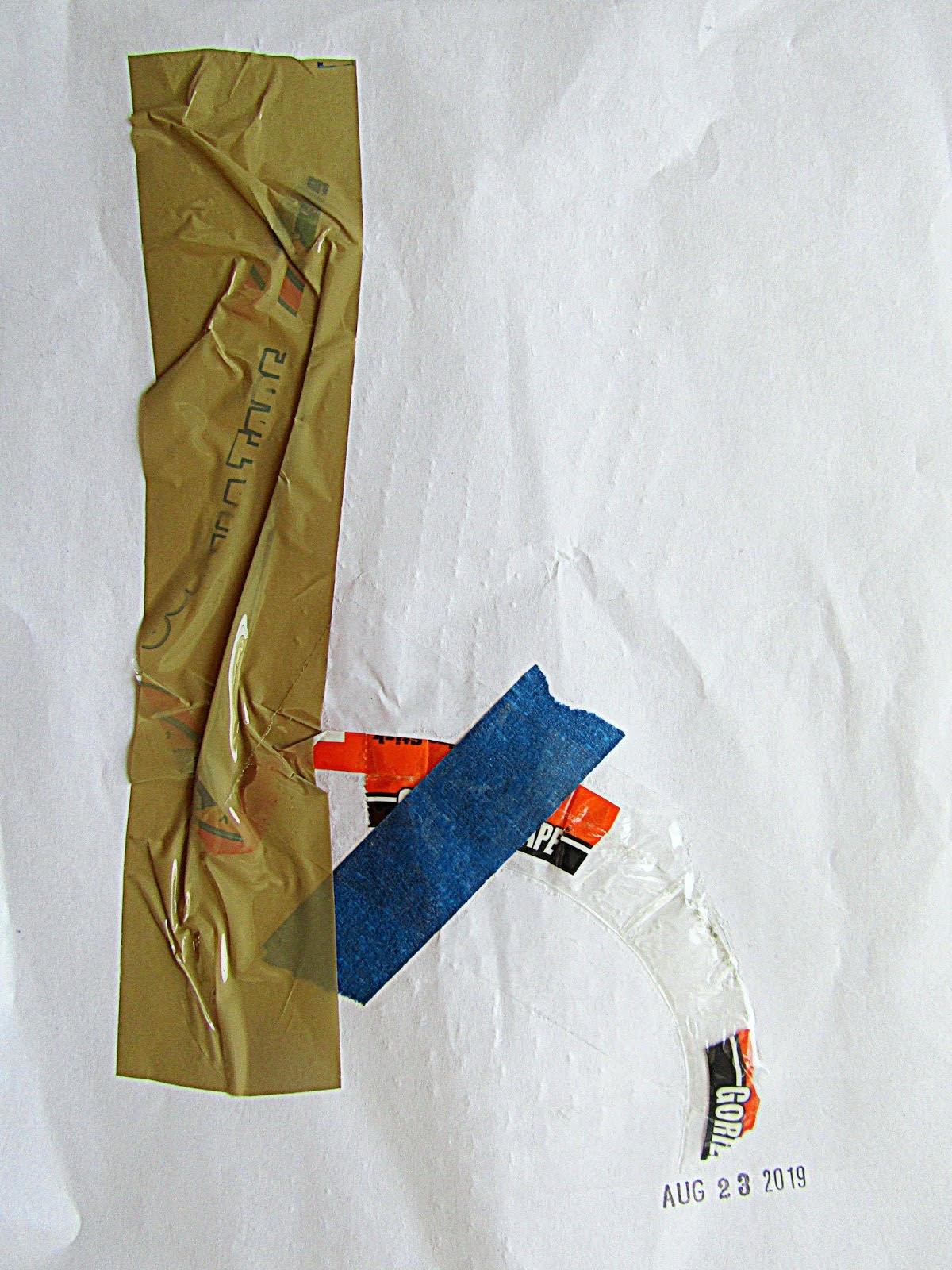
Thank you for your questions, Burak. I appreciate being given this opportunity.
Jim Leftwich June 2021
previously published in the 8th Issue of
Buzdokuz Poetry Theory Criticism Magazine
optimised for screen readability by NKdeE
De glazenwasser
Een Chinees zei gister dat de stilte in Nederland zo rustig is.
Een glazenwasser verliest zijn evenwicht.
En valt dood neer in Arnhem.
Wachtend voor het stoplicht keek ik
omhoog en zag aan de overkant
van het kruispunt een glazenwasser,
wankelend op de hoogste sport
van zijn trap onhandig met zijn wisser en zeemlap
reiken naar een raam dat open stond.
Ik vroeg mij af waarom hij denkt
dat dat niet levensgevaarlijk is.
Ze zeiden op het nieuws dat een glazenwasser
zijn evenwicht verloor en in Arnhem is neergestort.
Dit alles verbaast me niets.
Ik ben van nature confuus van aard.
Zij kondigen zich aan als eerstgedienden:
“Heibel en trammelant, voor ieder nieuw begin”
Een angstknauw laat hen oudvertrouwd binnen
Wulps heupwiegend volgt Vernieuwzucht in hun voetspoor
Daar gaan we weer denk ik, en ja hoor
Zij voeren hoog in hun vaandel:
De Toekomst!
Heibel ziet grote veranderingen
En Trammelant zegt dat daar haast bij is
Zij laten met trompetgeschal Vernieuwzucht
Van zijn beste kant klinken,
klanken zo weemakend die ik hoor!
Ik sputter wat over nu geen ommezwaai aan mijn hoofd
Maak weloverwogen zwierende armbewegingen alsof ik dans
Trap onverwacht Heibel en Trammelant recht in het kruis
Mompel binnensmonds “een koekje van eigen deeg, my dear”
Hoor hoge piepstemmetjes kermen in koor:
Harmen doet aan vernielzucht, hoor!
Voor Vernieuwzucht heb ik wat beters in petto
Ik ga naar de kelder en haal Traditie tevoorschijn
Leg hem alles kort uit; hij knikt begripvol
Traditie weet dat dit zijn moment is:
Is top fit en er helemaal klaar voor!
Witheet en niet te houden
Vliegt ie Vernieuwzucht naar de strot
Die schrikt zich helemaal het apeloetje!
Met spastische kattensprongen stiefelt Vernieuwzucht er vandoor
Op oudkrakende botten maar nog jong van geest Traditie er achteraan
Een ratrace zoals niemand ooit zag!
Ik zal jullie vertellen hoe het afliep, Lieverds
Wees bij de les!
Met een snoekduik werpt Traditie zich op Vernieuwzucht
Hij is zijn ultieme gruwel, Vernieuwzucht knijpt de billen saam
Krijgt acuut kippenvel tussen de schouderbladen
Zweet peentjes en weet als geen ander
Traditie is groter, de Dwarsligger is groter
De grote Dwarsligger, Traditie is groot!
Nu moet je boos worden, echt
Nu moeten jullie boos worden, echt
Nu moet je echt heel boos worden, echt
Echt, JULLIE zijn immers ONZE gruwel!
Met twee handen sla je eerst links dan rechts
De Dwarsligger hard op z’n stijve kaken
Doe een pas naar achter nu, dat is wel zo gepast en zie
Een dun rillend stroompje bloed sijpelt uit z’n grote dikke neus
Ook veel tranend snot nu uit monden, oren en ogen
Allemaal oud snot!
Lach lachend hard een schaterlach!
Lachen tot je er dood bij neervalt!
Lachen tot je een ons weegt, tot het lachen je vergaat!
En lachen zullen jullie: LACHEN ZEG IK TOCH!?
Er heerst pandemie. De herbergen zijn dicht. Mannen liggen op de zetel voor de treurbuis bier uit blik te drinken en laten hun vrouwen op hun honger.
Deze gaan dan stiekem elektronepgesprekjes voeren op sites bedoeld om afspraakjes te maken om van bil te gaan.
Zelden komen ze ervan.
Buiten verkneukelt het virus zich in zoveel uitzichtloze eenzaamheid.
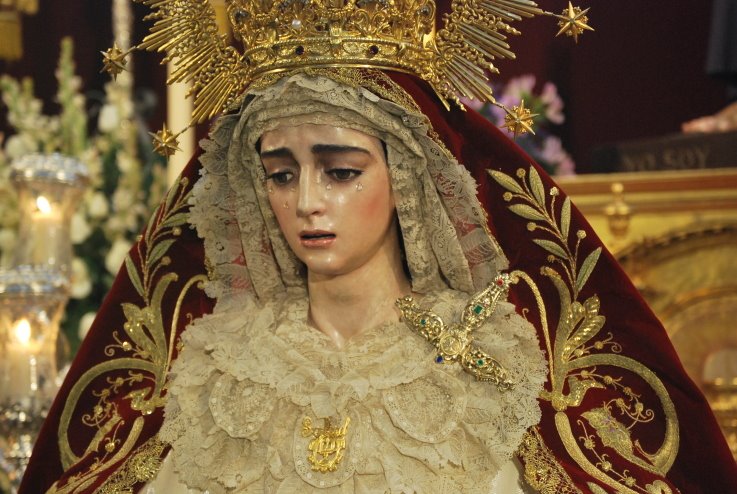
Dolores
– twee fragmenten –
O gewaad niet van goud maar verguld,
O gaarde waar alleman mag toeven,
O toren niet van ivoor, maar onthuld
door hoog reikende handen uit de groeve ;
O mystische roos die bloeit op het slijk,
O huis gebouwd door ijskoude harten,
O huis van vuur onblusbaar en rijk,
Onze Lieve Vrouw van Smarten !
O lippen vol van wellust, vol van vreugd,
kronkelslangen aan mijn borst gedrukt,
hap stevig toe, opdat zo’n wrede kus u heugt,
en druk opnieuw uw lippen waar dat is gelukt.
Mijn hart dat danst als ik zo vurig word gekust,
mijn ogen tranen, terwijl mijn vlam verrijst –
ach voed en vul mijn zuchten ongeblust,
eerdat de pijn haar deel opeist.
~
Genaderd ben ik van de verste, de uiterste poort
tot het altaar waar geilheid door gebed wordt gestut –
welk nut dient zo’n vroomheid de sterflijke soort ?
Zeg ons, Vrouwe van kwelling, welk nut ?
Uwer is de laatste slok wijn en míjn mores,
de laatste drup van de kelk zal u tarten,
O droeve en woeste, wellustige Dolores,
Onze Lieve Vrouw van Smarten !
Uwer is de jonge wijn van mijn begeren,
vrucht van vier lippen die zich verdrongen
tot haar en oogleden zich aan de vlam bezeren,
met schuim gevoed door felle slangentongen,
het slangenkwijl van ongetemde wellust,
zouter nog dan het geborrel van de zee –
onstuimig vuur komt weer tot rust,
als zoete wijn maakt het gedwee.
~
Algeron Charles Swinburne, Dolores – notre-dame des sept douleurs, Londen 1866
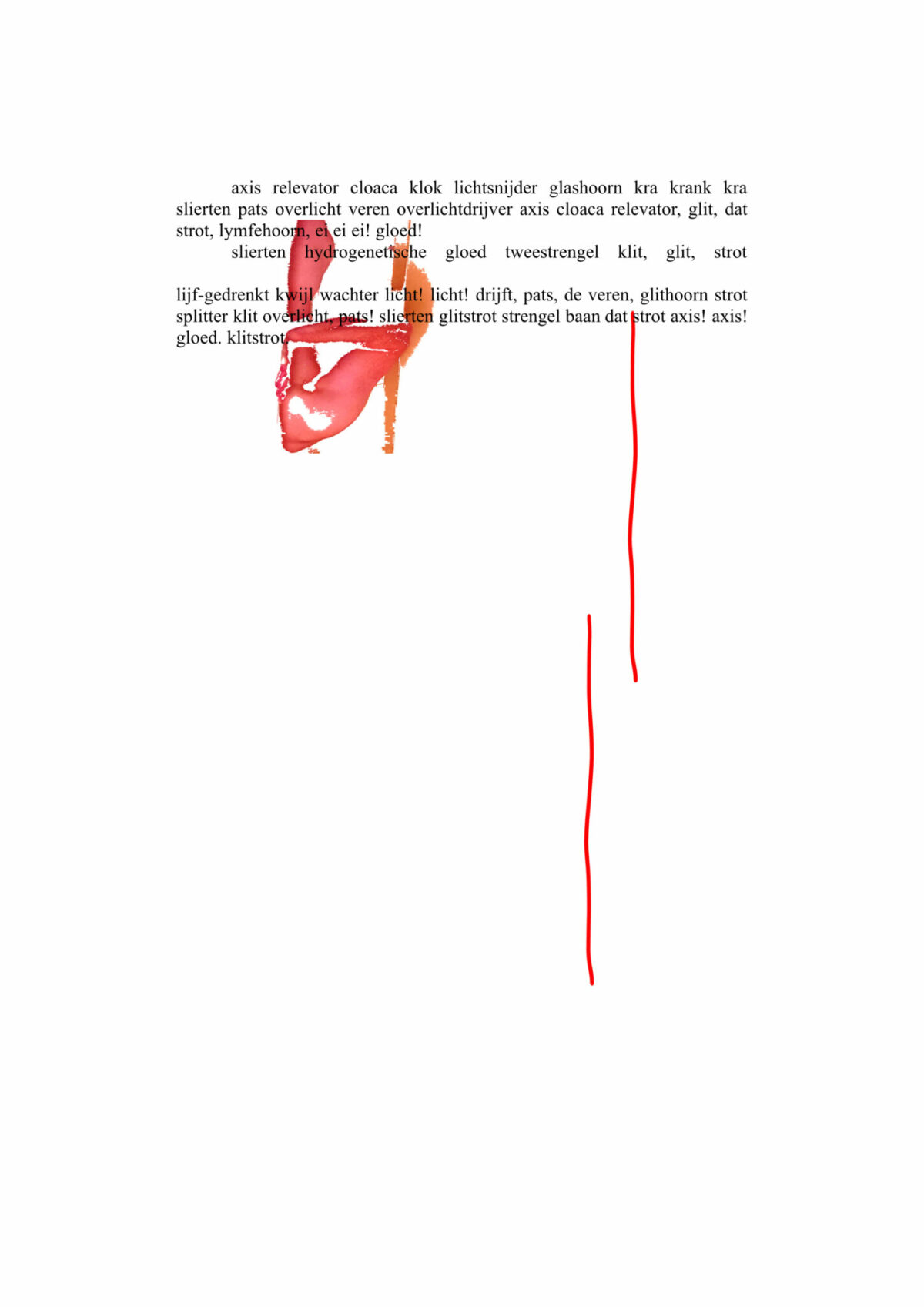
Werk In Wording
Tekst 11, eerste schets/test
uit metafysika uitgelegd aan onze goden van sadà\exposadà
tekst 1
stem: Nanne Nauta
verkrijgbaar bij Uitgeverij crU; http://www.uitgeverijcru.nl/bundels/metafysika-uitgelegd-aan-onze-goden/
uit metafysika uitgelegd aan onze goden van sadà\exposadà
tekst 3
stem: Jeroen van den Heuvel.
verkrijgbaar bij uitgeverij crU http://www.uitgeverijcru.nl/bundels/metafysika-uitgelegd-aan-onze-goden/
zie ook: https://ooteoote.nl/2019/10/ei-182-sadaexposada-metafysika-uitgelegd-aan-onze-goden-i-3/
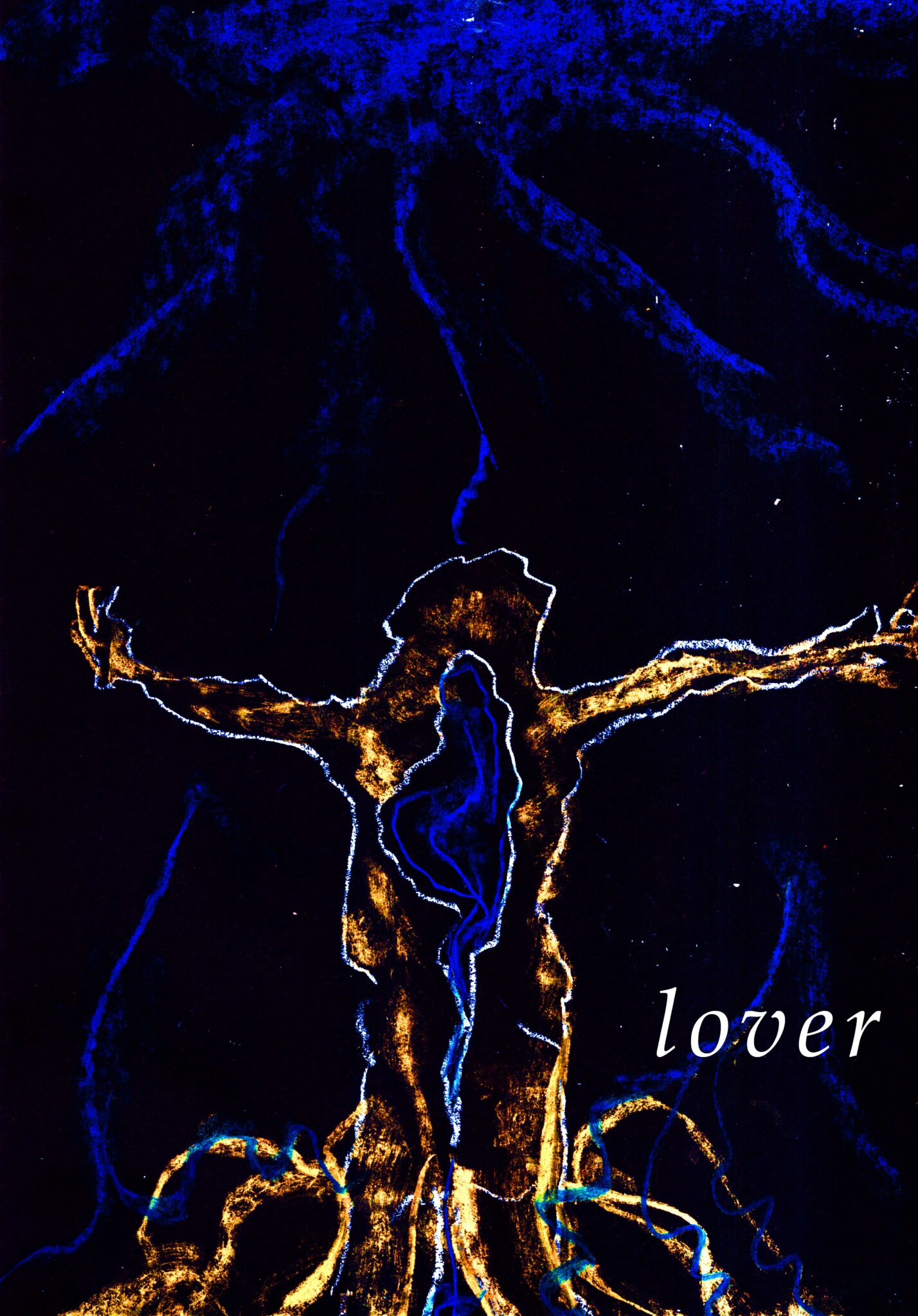
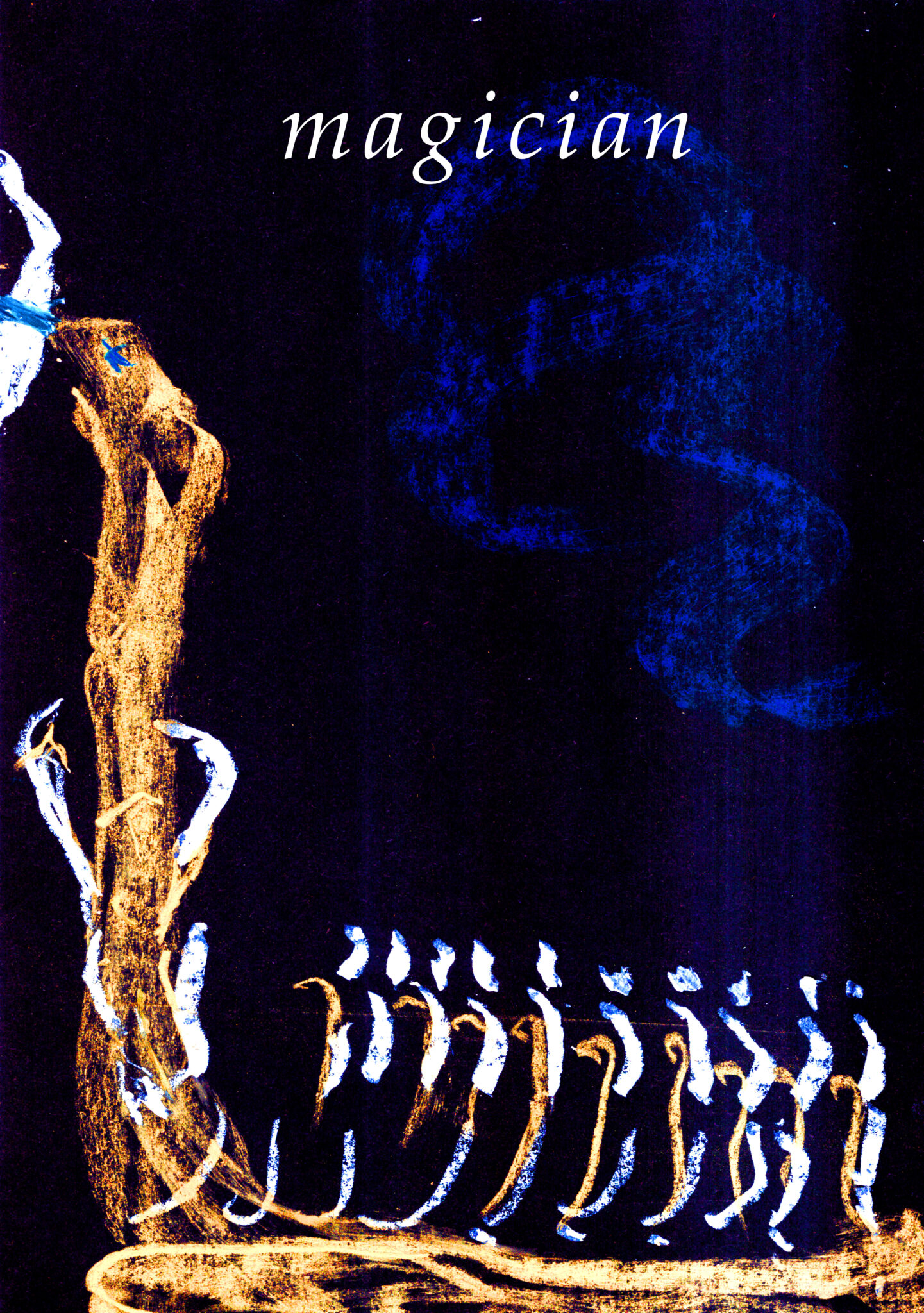
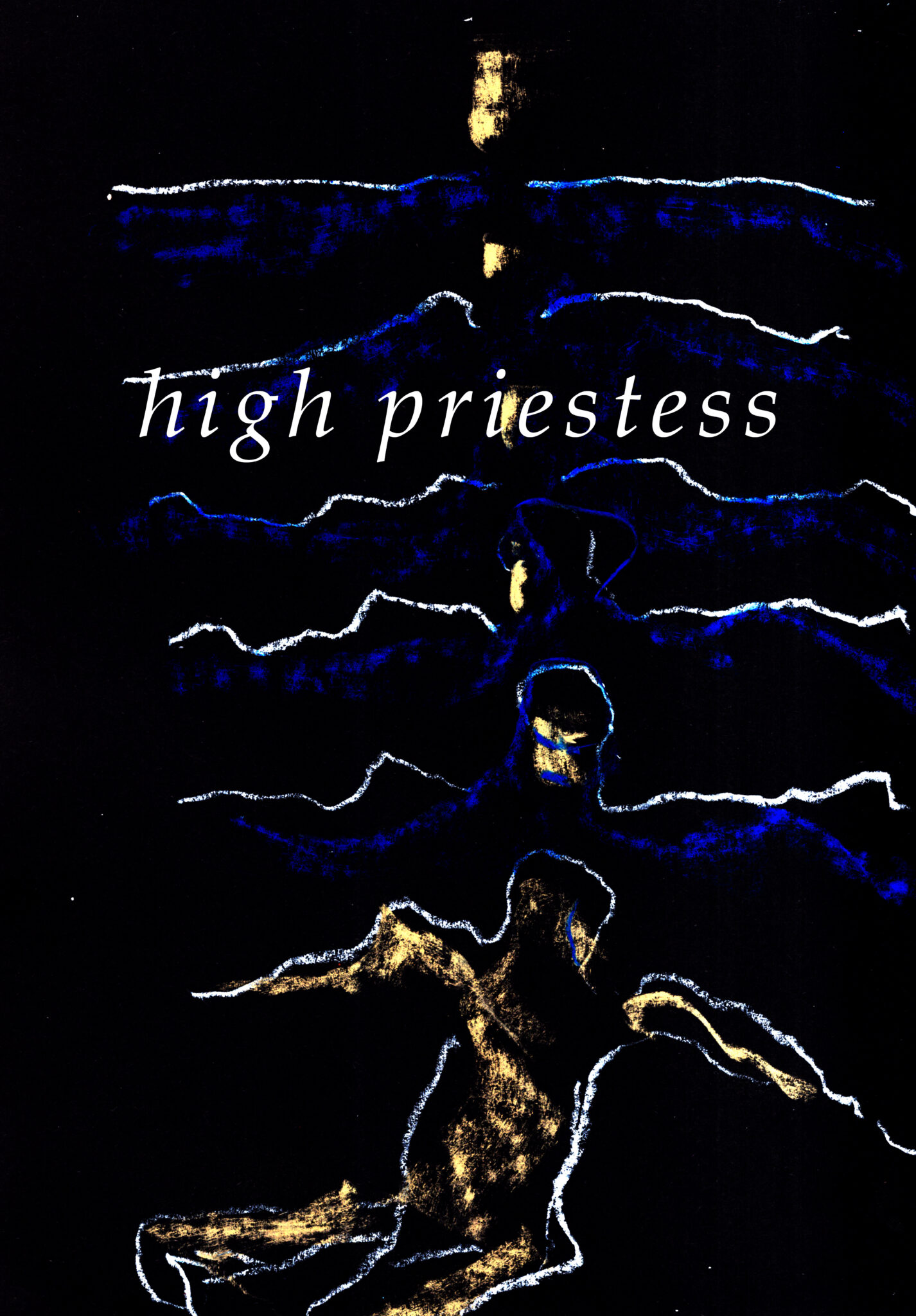
TER AFSCHEID
WAT EEN KUNSTENAAR BEHOORT TE DOEN
WAT EEN KUNSTENAAR BEHOORT TE DOEN
IS DE DOOD REANIMEREN OF ANIMEREN
BEIDE INTERESSANT
IK VERKIES REANIMEREN
WANT DAT SUGGEREERT DAT DOOD OOIT LEVEND WAS
OF LEVEND IS GEWEEST
DIT IS DE MELANCHOLIE WAAR IK VAN HOUD
HET LEVEN, DAT IS DE BUITENKANT VAN DE DOOD
ER ZOU NU EEN KERN IN HET LEVEN ZIJN,
ONS ONBEKEND EN GELIJK DE DOOD
ALLES WORDT OMGEVEN DOOR VERDRIET, EEUWIGE
WEEMOED EN HET GEVOEL ONBESTEMD TE ZIJN
HIER IS DE KUNSTENAAR THUIS
HIJ BEWEEGT ZICH STEEDS WEER TOT DE KERN
DIE DE DOOD IS
DOET MELDING HIERVAN AAN ANDEREN EN ZORGT
VOOR
HEELHEID
Het is al lang kwart over acht geweest. Of kwart over zes, voor mijn part. Het doet er niet toe.
Het is immers kwart over tien.
We zijn vlug geneigd hieruit een besluit te trekken maar dat is er niet.
Als we er morgen maar niet meer aan denken.
Het is bijlange morgen nog niet.
Er kan nog veel gebeuren.
Of helemaal niets.
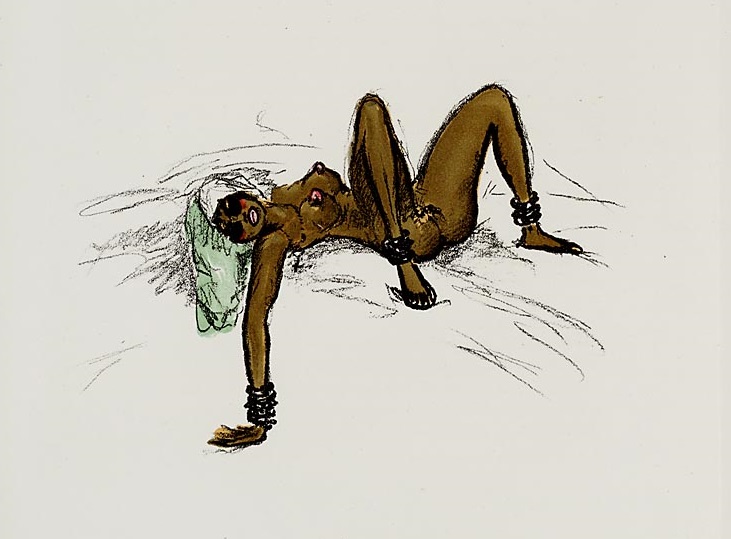
De zwarte dame
Zij heeft haar zinnen, van duivelen bezeten,
op het arme kind gezet, een vreemde proeverij
van kwade vruchten – haar kleed alvast kapotgereten,
bereidt het roofdier slinks haar wrede boeverij:
Aanschouw haar zalige tepels beide, ze prijken
hoger dan een hand kan grijpen, haar vertier
– haar woest getrappel – gaat louter over lijken,
lam slaat elke tong, ongeschikt voor geil plezier.
De bevende gazelle in al haar naaktheid vloekt
met de dwaze olifant – zij wentelt zich gezwind
ruggelings, koestert hartverwarmend als een kloek,
lacht naïef haar tanden bloot naar het treurig kind –
Dan tussen haar benen waar men de prooi al vond
kijkt een duister open plooi je onder krulmos aan:
betreed het paleis van deze uitzonderlijke mond
bleek en roze als een schelpdier van de oceaan.
(naar Stéphane Mallarmé)
ill. Kees van Dongen, kleurenlitho voor Henry de Montherlant, Les Lépreuses, Parijs 1947
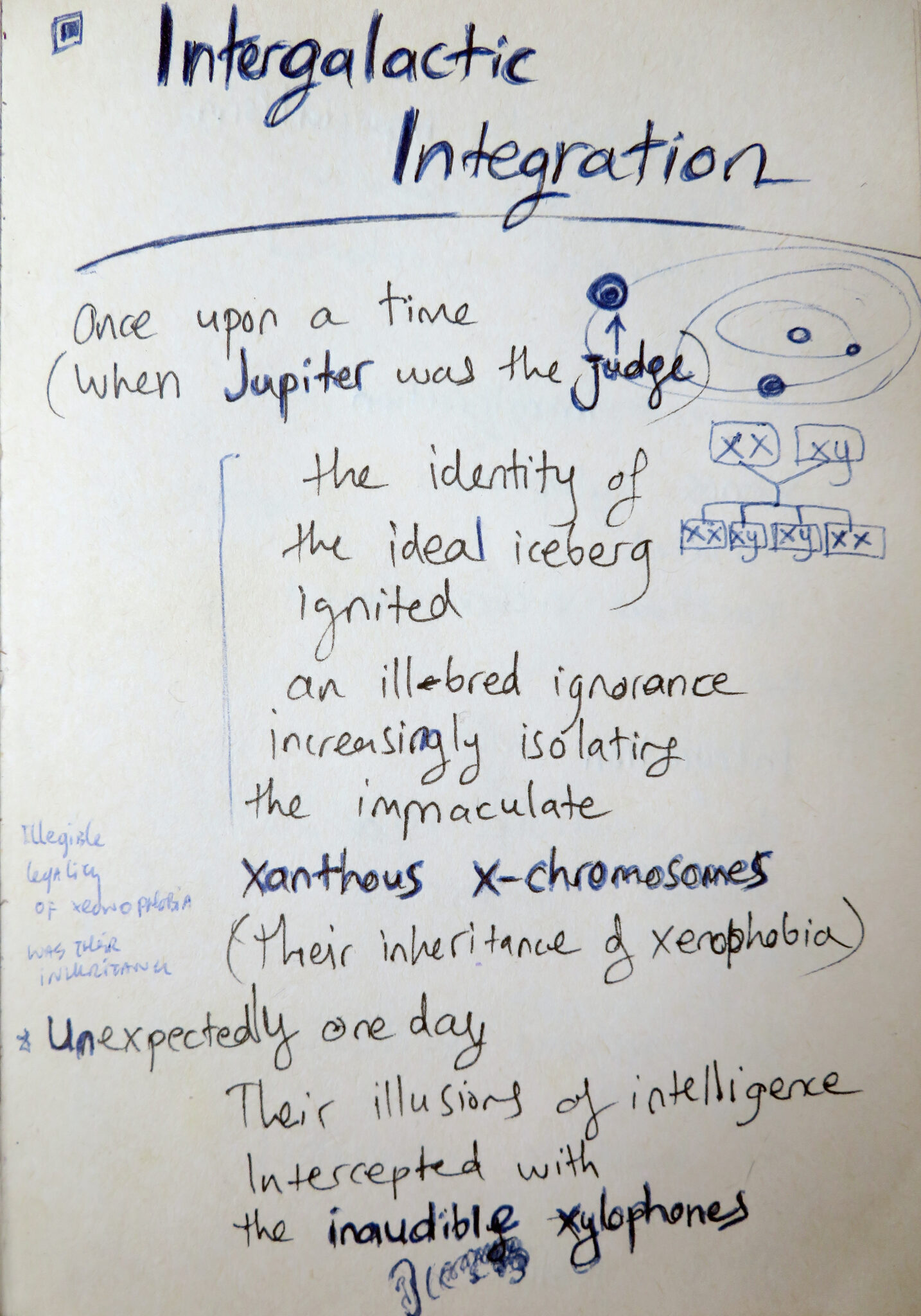
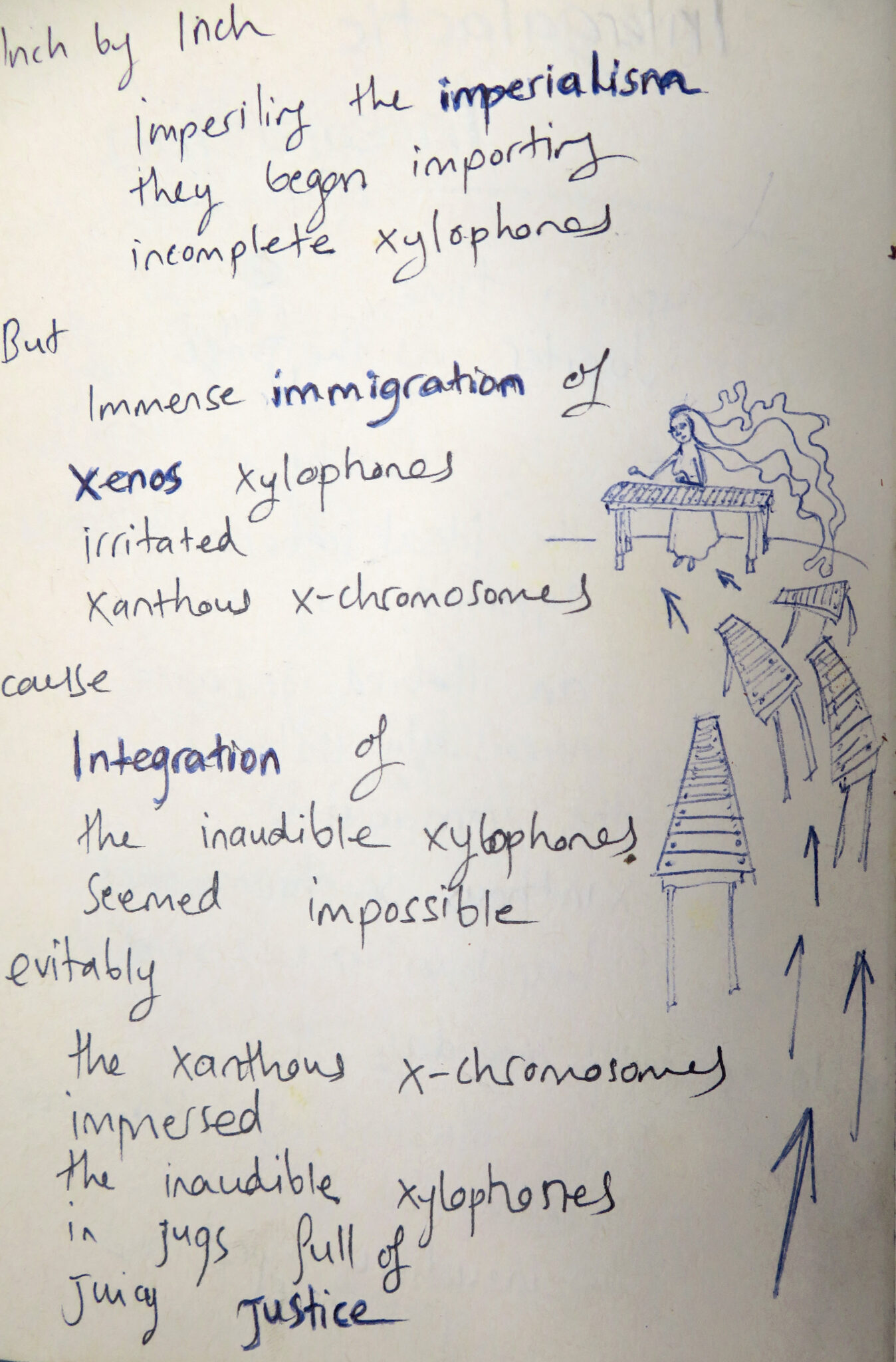
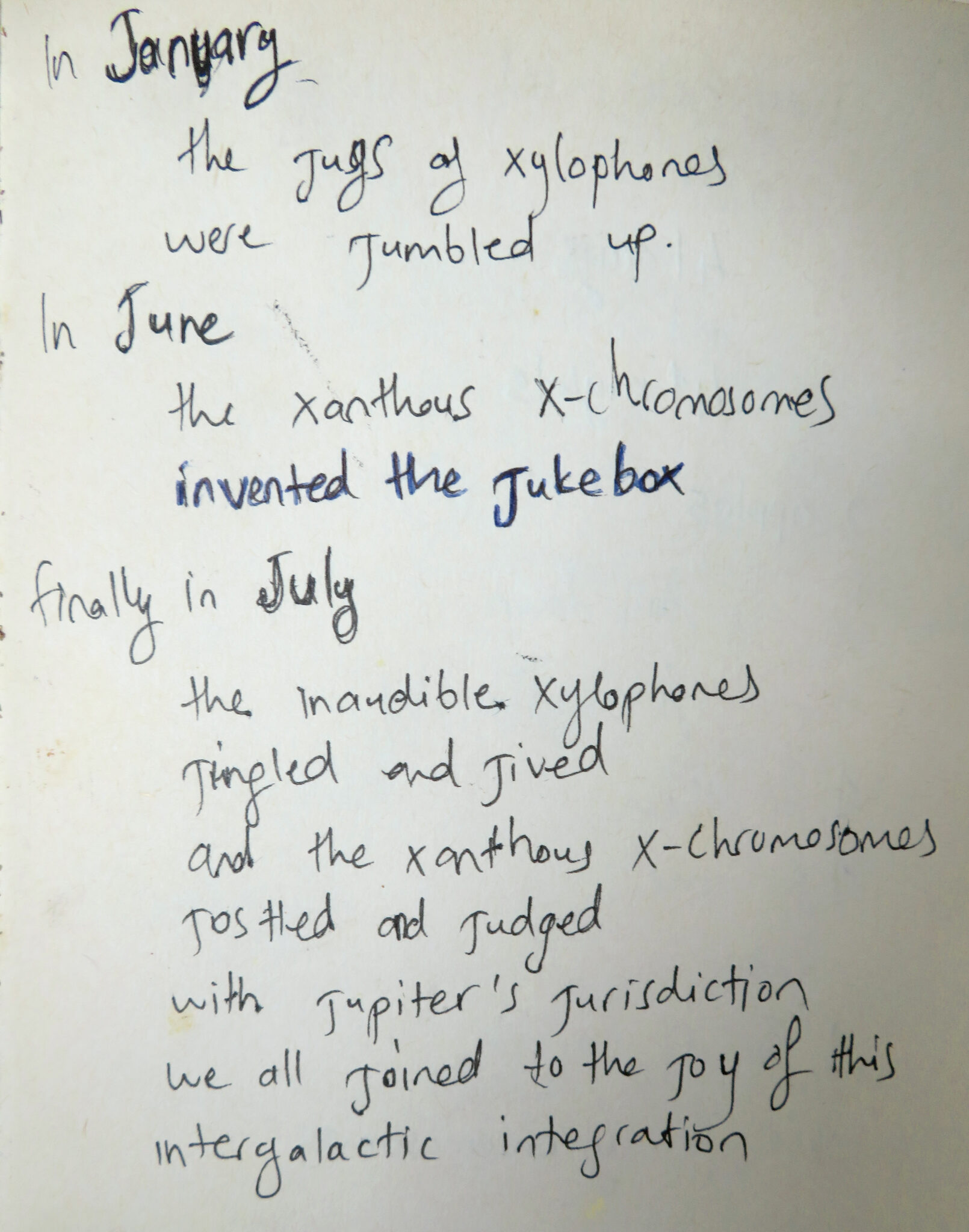
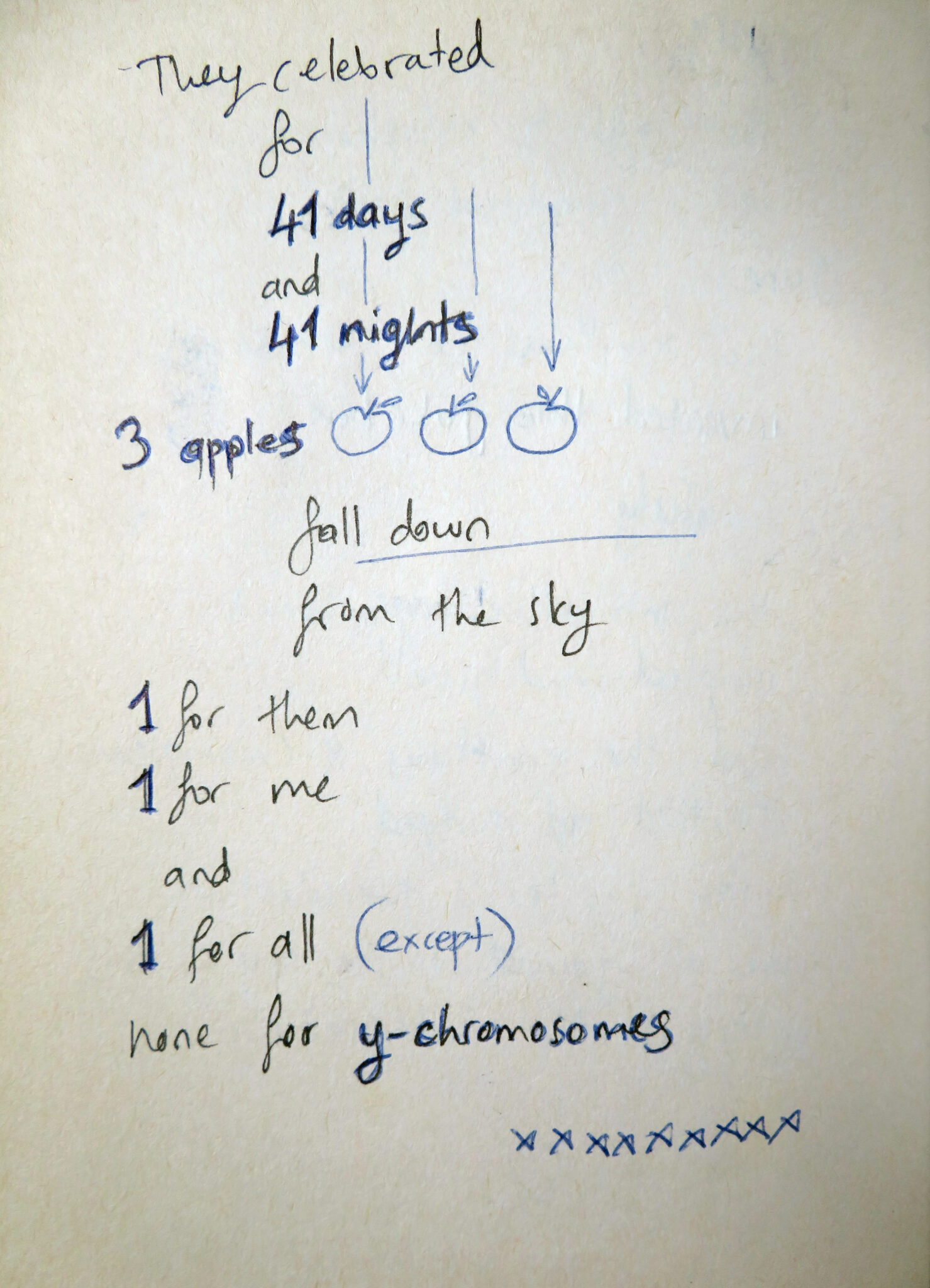
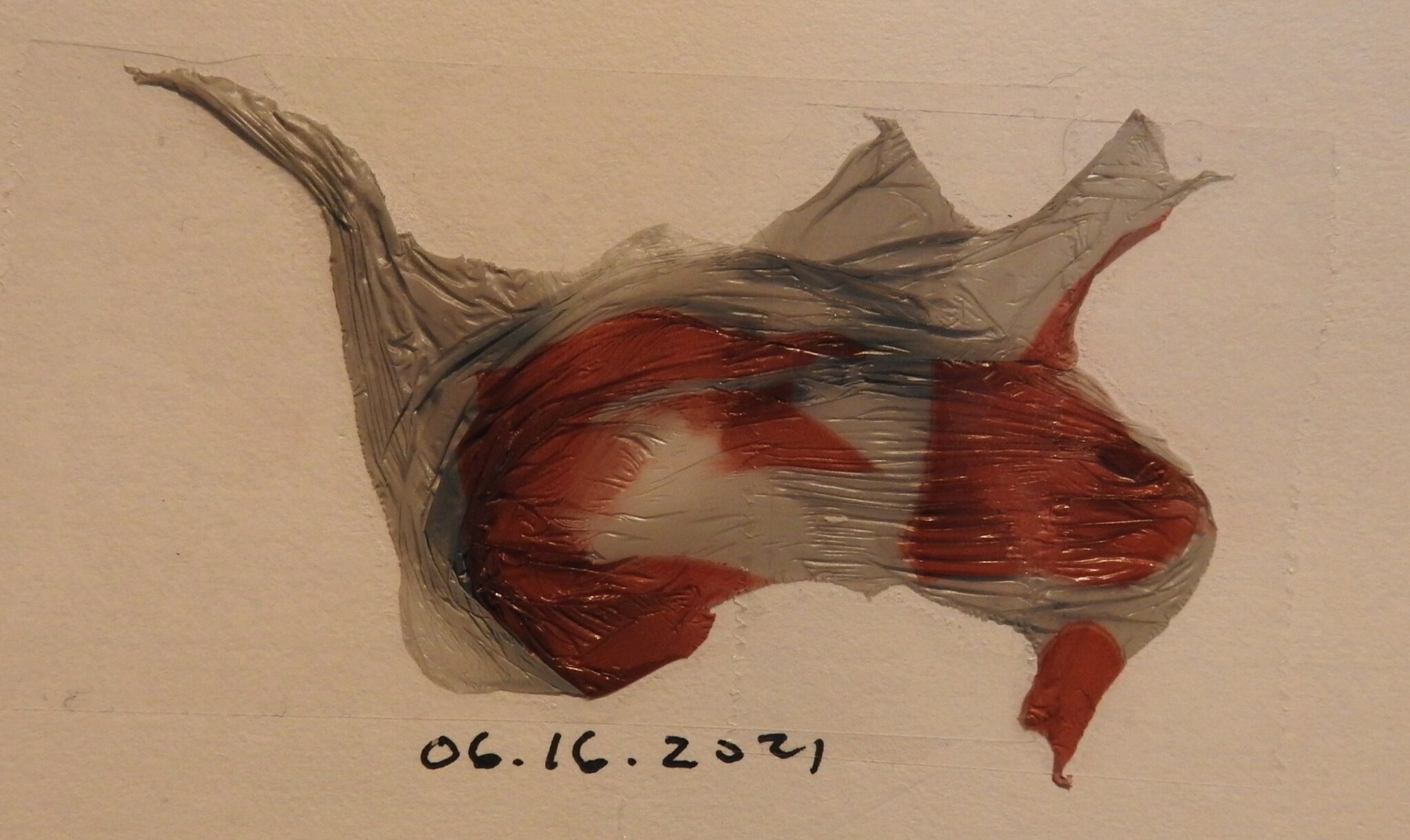
every essence is obscene
every creature is a lie
my hairy wings will circumcise
my hairy snout will suck your wets
my angled ache will penetrate
your fishy love will turn to hate
every creature is a lie
every essence is obscene
you will sync with death and i will rise
extended version:
image: jim leftwich
text & music: dv + vintage modular 2.2.5 + ITL
leftwich/vekemans image to text app output list
for e.d.
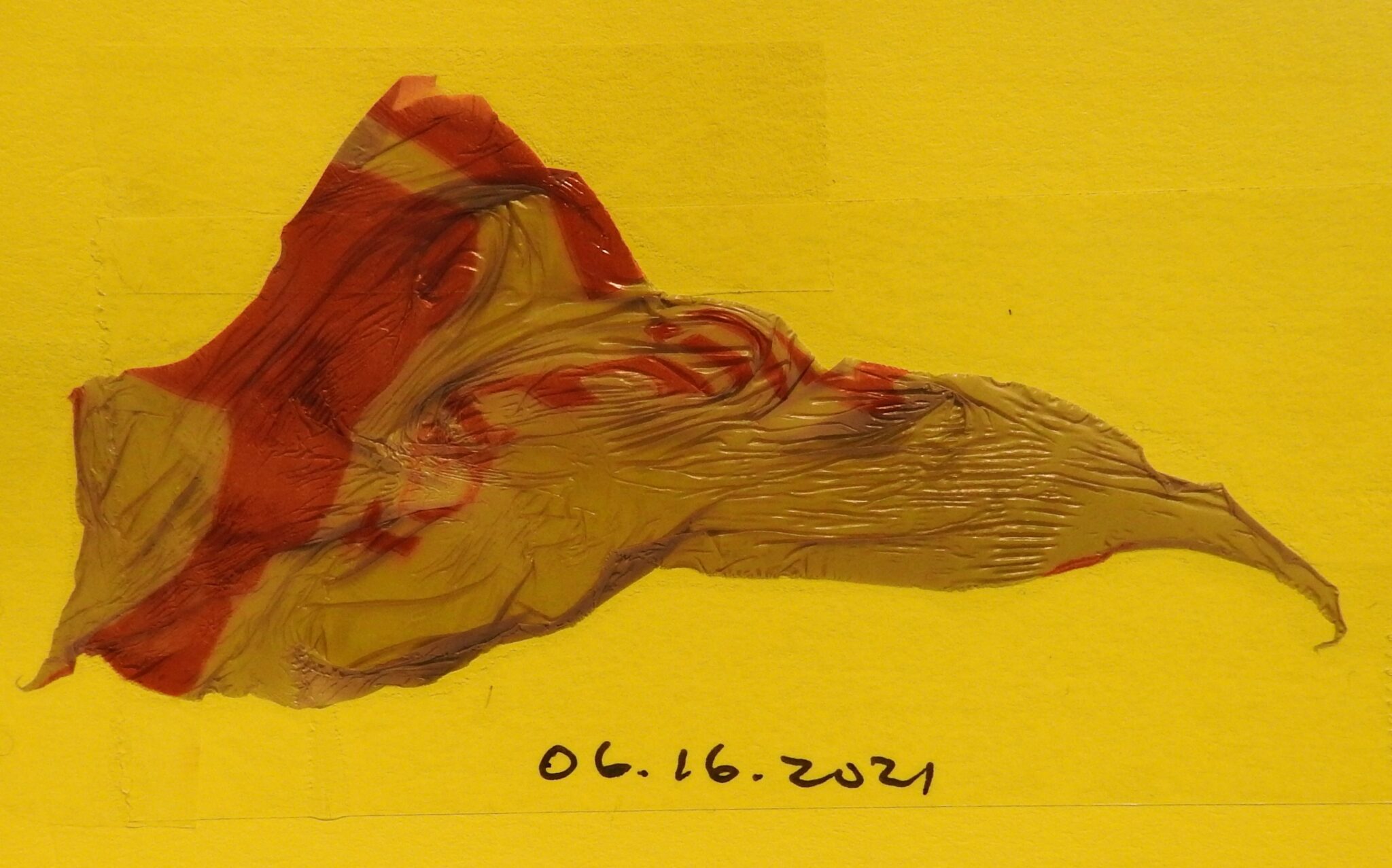
reign a pun the rash thy fiery hail of laughter
ravish the margins do bleed the verge to its ditch
blacken the pale and each think burden with hope
the center of our ail and complicit to tongue with.
swallow eye do i swerve in contentment
sacred to none so sick i reed in your winding
and a way is the way to my waist in the end.
images: jim leftwich
text: dv
leftwich/vekemans image to text app output list
for e.d.
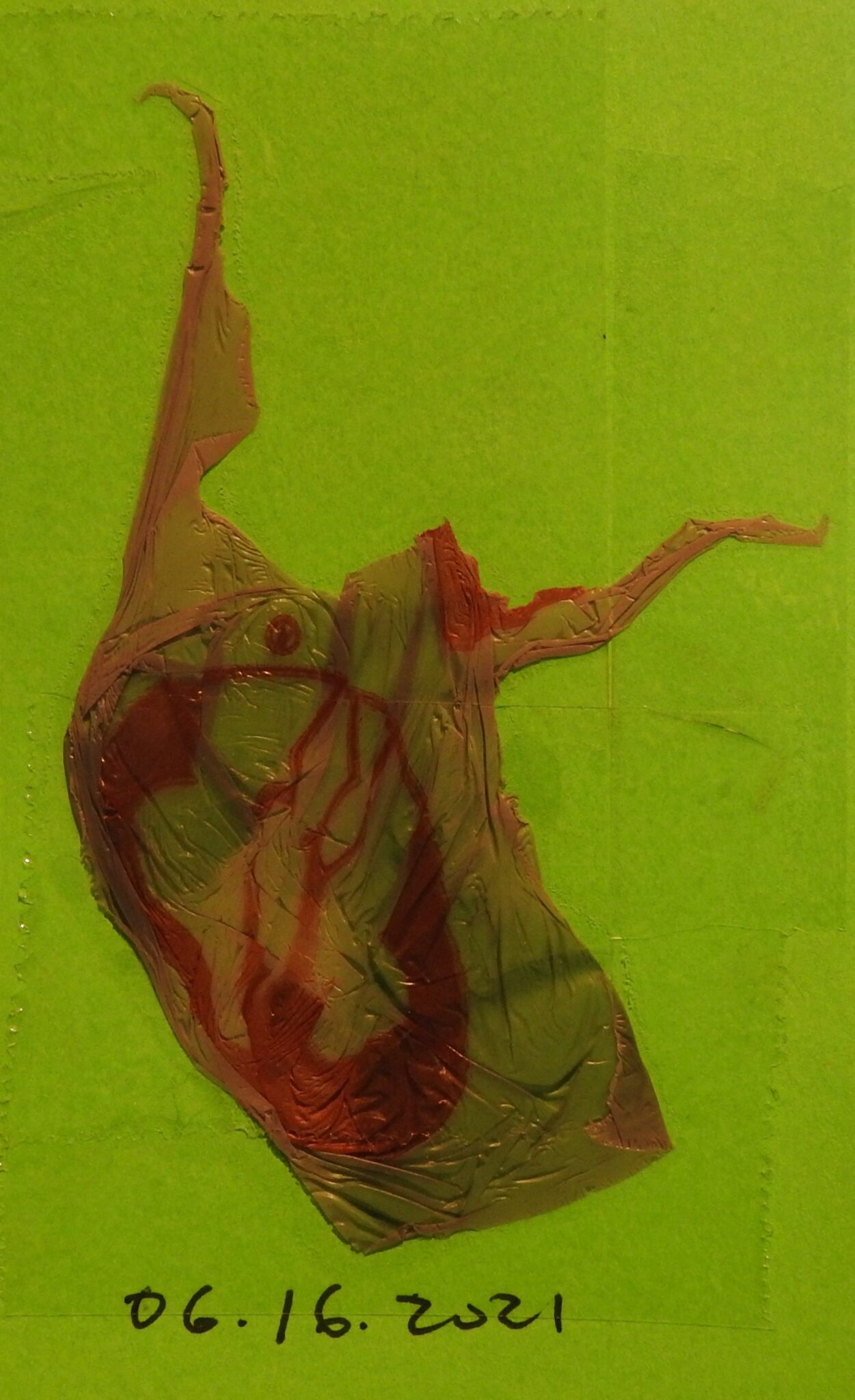
to earn the page i bled
it sick to swer ve th e k
wint i snapped its str
ing to wheel the want
i broke the axles to v
erify its death be bliss.
images: jim leftwich
text: dv
leftwich/vekemans image to text app output list
for e.d.
image:
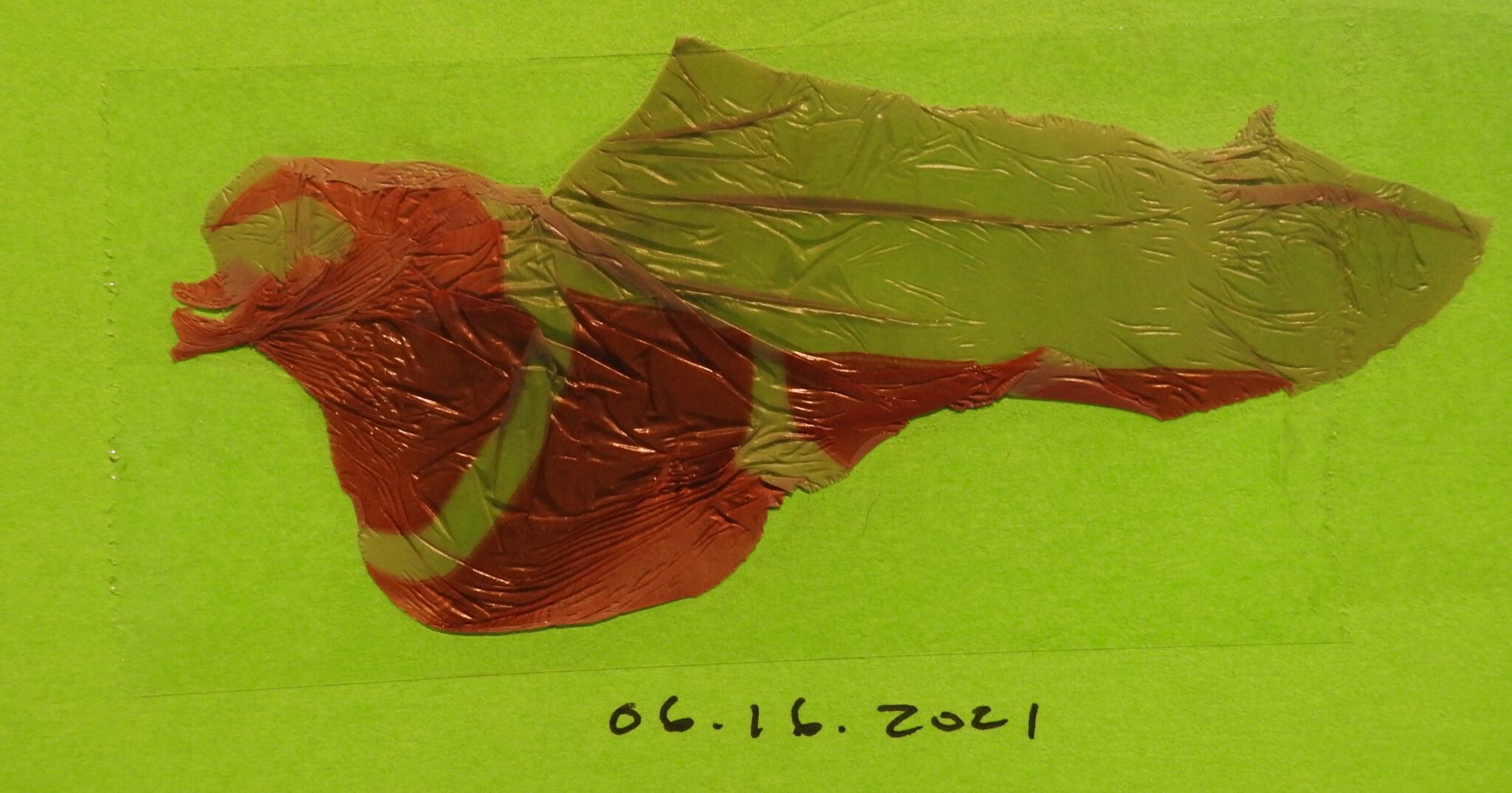
text:
your roam is sacked
increase of none
unvoice my syllables
delete my jots
do touch me not
remain beatitude a
manual and litter sparks
of flight each dying ache
we try to knit the torn
of tender ligaments
to the filth of our devotion.
images: jim leftwich
text: dv
leftwich/vekemans image to text app output list
for e.d.
– advertentie –
Steun het Platform voor Literatuur en ergere Ellende:
Koop een RADIO KLEBNIKOV CD!
[bandcamp width=350 height=470 album=713829313 size=large bgcol=ffffff linkcol=0687f5 tracklist=false]
ontdek alle RKCD’s op
https://radioklebnikov.bandcamp.com/
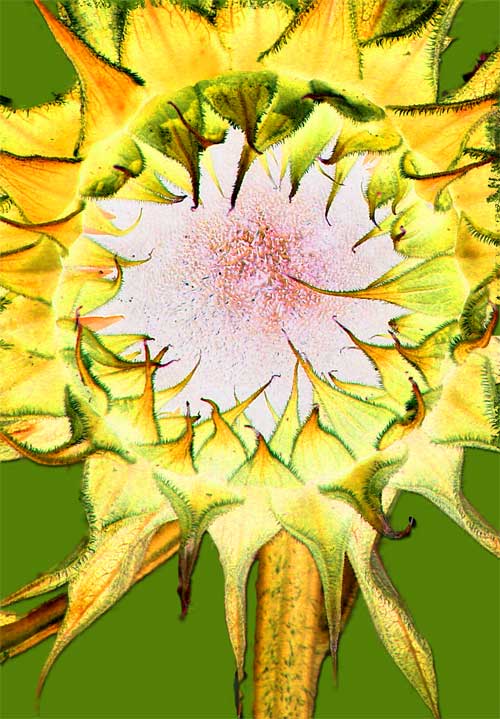
Hallo lieverd,
Mijn excuses voor het verstoren
van uw dagelijkse werkzaamheden!!
Mijn naam is Advocaat Mehmet Keles Esq,
een advocaat en hoofdadvocaat die werkt
op alle gebieden van de jurisdictie van de familierechtbank.
Ik heb mijn cliënt en zijn gezin verloren
bij een auto-ongeluk, hij heeft het bedrag van
(dertien miljoen achthonderdtachtigduizend dollar)
op zijn rekening staan, ik heb een mandaat
van zijn bank gekregen om zijn naaste familieleden
te voorzien voordat het fonds in beslag wordt genomen
door de Bank.
daarom heb ik contact met u opgenomen
in deze zaak vanwege het feit dat u dezelfde
achternaam had met mijn overleden cliënt
hij komt ook uit uw land en er is geen
geregistreerde erfgenaam in zijn rekeningbestand
bij de bank,
gelieve dringend te reageren zodat ik kan
geven u alle nodige informatie
over deze erfenis transactie
voor uw beste begrip
als u geïnteresseerd bent.
Heb een mooie dag
wachten op uw snelle
antwoord!
Met vriendelijke groet!
Barr. Mehmet Keles Esq
.
Wie eenmaal het getal kent
van de volmaakt vrije wereld,
blijft hij misschien wel zij
dan voorgoed thuis?
.
Of begint dan het dolen?
++
.
Niet achterlijkheid noch vrolijkheid
worden beloond, ik val mooi
.
buiten de prijzen. Daar
is het goed toeven.
| Sans titre en attendant Un arbre, ni coq ni âne, prend soin de son âme. Y saute un pinceau ou encore un homme – oiseau. Ils sauvegardent notre jeunesse, ni d’une poule, ni d’une ânesse, empêchant notre tronc de prendre folie ou poltron. Vois-tu ce gros tronc ? La forme le ronge, la vase d’un mauvais songe. Vois-tu cette fine branche ? Elle a une belle jambe bien blanche. |
| Incrédule quotidien L’indiffère semble un malheur. L’incrédule du coup a peur. Quel bonheur, que rien ne casse, je n’ai pas de copains de classe, ni des camarades de chasse, s’appelant bêtement Ducasse. Le cuir une peau bien tannée se tient souple dans la main. La viande dans la saumure salée se fait manger de goût plein. Tu as beau dire que tu t’en fiches, pâlis au moins quand on te couillonne. |
| Ongeloof van elke dag Onverschil lijkt een ongeluk, ongeloof schrik zonder opsmuk. Mijn geluk kan niet stuk: ik ken geen Van Lienden onder mijn vrienden. Gelooid ligt het leer soepel in de hand. Gepekeld keer op keer mals het vlees onder de tand. Zeg dan nog wat kan het je schelen. Verbleek en laat met je ballen spelen. |
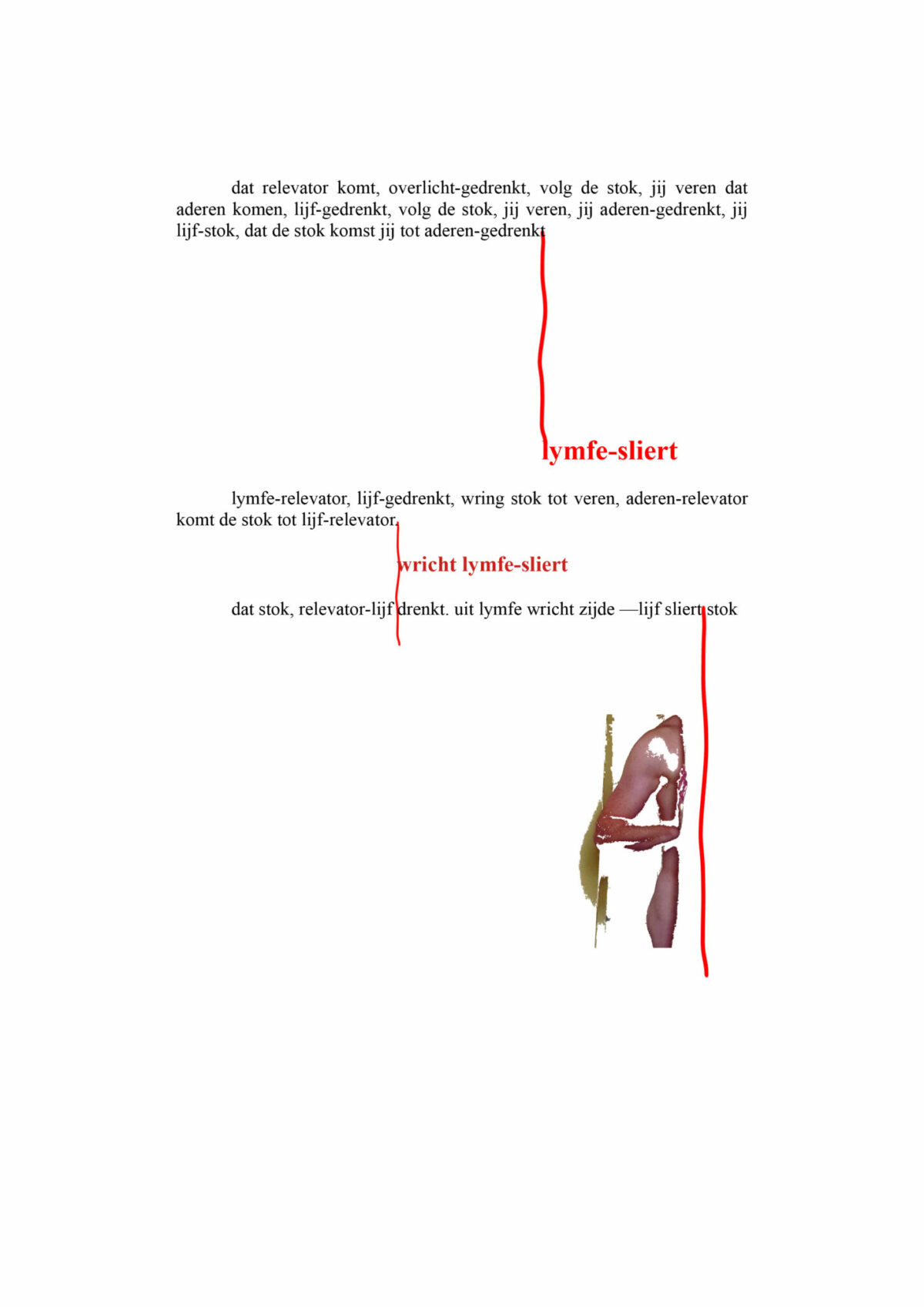
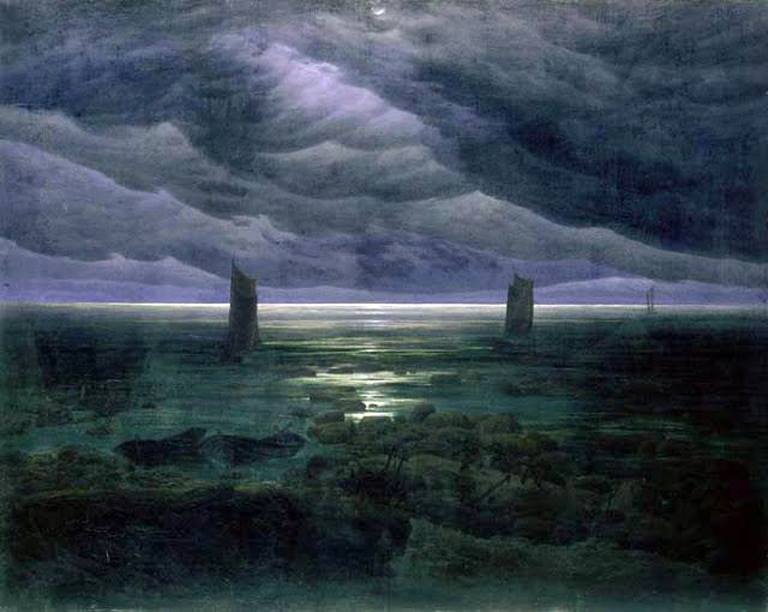
Mijn god, al die herinneringen, Mnemosyne is een beest. Zonet weerklinkt de stem weer van mijn moeder. Mijn vader eet gehakt. En ik? Sterven zal ik in deze poel, dit bellenvat dat het verleden opslorpt en weer uitspuugt. Mijn slab en mijn baard kleven en stinken als de hel die mijn geboortegrond is.
En de toekomst, wat komt nog? Ook die zweeft en sneeft om mij heen, klautert uit dezelfde bron, was dit dan haar doos vol van het kwaad dat zich uitstort over de levende wezens? Dansen, het beste ervan maken, waar is Terpsichore als je haar nodig hebt, nee, Erato, Erato danst schoon genoeg, is een betere cipier voor alles wat ademt en bloedt.
Ik schommel, eerst komt het geluid van links, ijl en schril, dan van rechts, ietwat vals, verkeerd gestemd zeker, ik schommel door het strottenhoofd van de geschiedenis.
Children, leave the string alone! *) Kleio en Melpomene komen gearmd geslenterd van de grijsblauwe verte achter de bergen tot aan de rivier waaraan ik zit en beef. Hier, zeggen zij, open maar, en overhandigen mij een pakje in bruin pakpapier, als ik het open zijn ze weg, in het pakje zit een gedicht, in het gedicht komen van achter de bergen in de blauwgrijze verte gearmd geslenterd Melpomene en Kleio tot aan de rivier waaraan ik beef en zit. Hier, zeggen zij, open maar—
Ik ben inmiddels wel gewend aan dit land. Soms als ik me begin te vervelen met het almaar voorbijstromend water, zoek ik mijn pakje en open het. Alles wat ik ken en vergeten ben is om me heen. De stem van mijn vader, mijn moeder met haar volle mond weerklinken maar kort, al snel rijst achter de bergen van Eurynome het verre blauw, dat grijs is en blauw tegelijk. Craquelé. De bewakers van het land laten zich nooit zien nooit zien nooit zien. Ik ben vergeten dat ik vergeten ben en vraag als dat domme wicht waar mijn geliefde blijft blijft blijft en wie bewaakt hier het land, niks sterven en dood, Droste & Doppler bewaken het land.
titel ontleend aan Chris Yperman, Pour Delphine
*) Robert Graves, ‘Warning to Children’
ill. Caspar David Friedrich
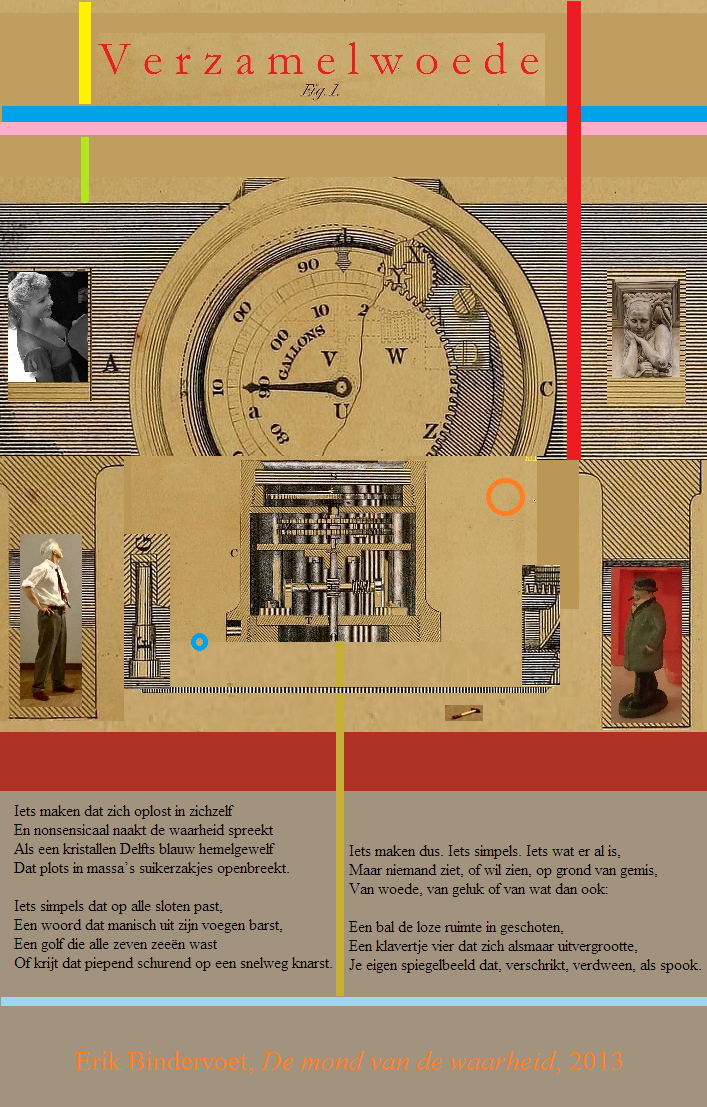
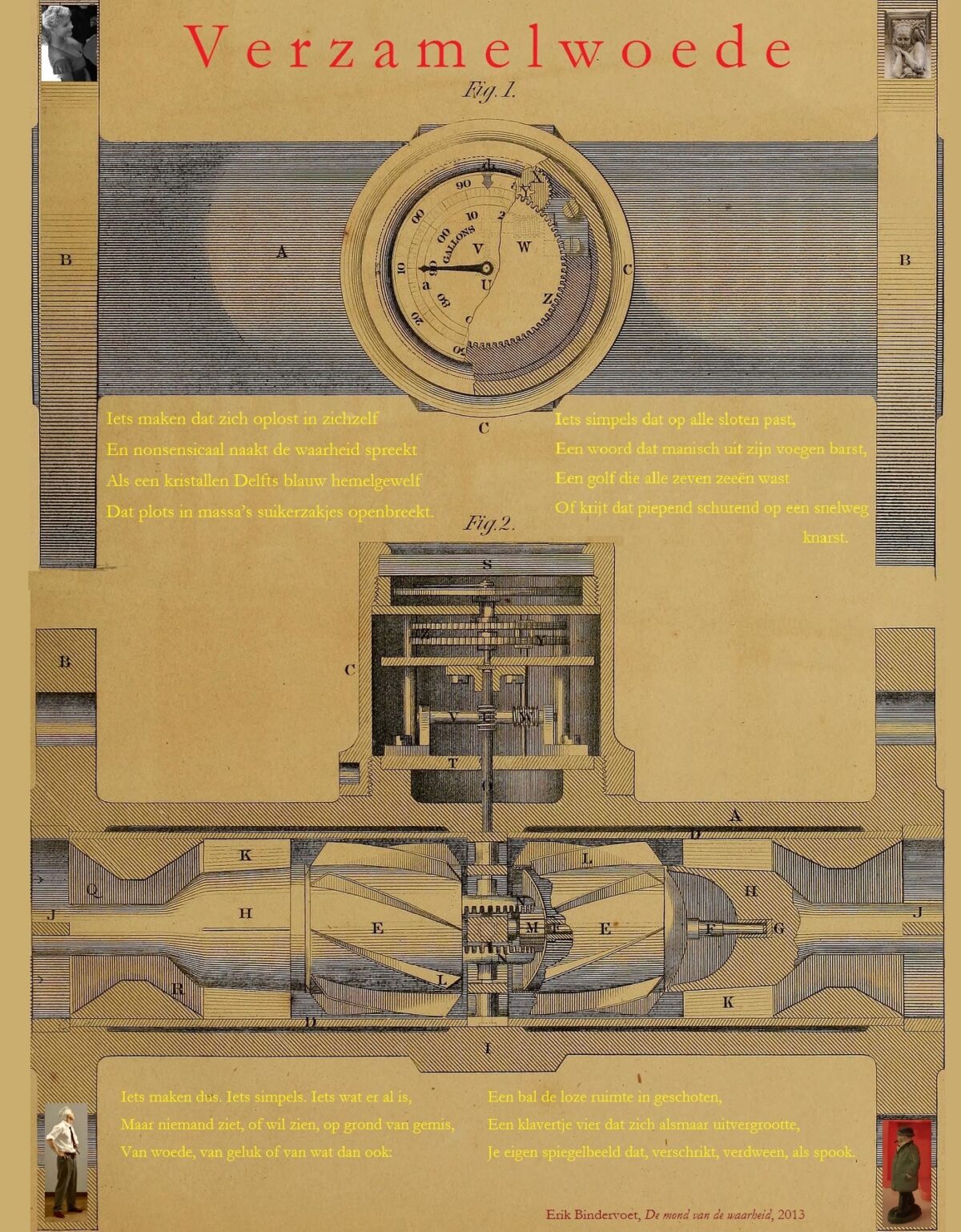
Zo’n titel die Hannah Duchamp altijd paraat heeft
Loopt u wel eens in de lente door het bos?
Ruikt u de wilde jasmijn wel?
Ziet u de volle knoppen van de kamperfoelie?
Struikelt u over oppoppende krultangen van jonge varens?
Uw scribent spreekt u hierover aan vandaag.
Hij is niet helemaal eerlijk geweest.
Harmen was namelijk jarig gister en
heeft u daar niets over verteld.
Al 52 jaar brak hij d.d. 28 april
winter en zomer in twee.
Het was een koud dag.
Maar in de zon al zomers warm.
Jaargang 53 is aanstaande vandaag:
het is 29 april in het jaar tweeduizendzeventien,
een zaterdag
Lente en herfst vindt Harmen stom want
de overgangen tussen zomer en winter
ZIJN KWETSEND
Voor lente en herfst hebben de mensen een zwak.
Dat ligt aan de lente en de herfst, niet aan de mensen:
lente en herfst moeten gewoon hun ware aard tonen!
Want wat wil je nu, tante Lente? Wat wil jij nu, oompje herfst?
Jullie willen toch beiden
gewoon zomer of winter zijn?
Hèhè lente, met je bloesems en zo
Tuttut herfst, met je bruine bladeren en zo
Maar waar Harmen ook liep,
het rook er naar wilde Jasmijn en
omdat die geur zo heerlijk was,
plukte hij 15 bloemtoppen.
Eerst dacht hij aan thee
maar nee, dan liever griesmeelpudding
met hazelnoot, citroen, vanille,
cranberries en rozijnen.
Harmen kookte de bloesem in melk
met citroenschil en vanille,
zeefde de melk en maakte de pudding.
The proof is in the pudding, is het niet?
En waren die wimpers en wenkbrauwen
van het meisje met de parel nu voor,
tijdens of na het debat over cultuur
gisteren nieuws?
En loopt u wel eens door het bos?
Ruikt u de wilde jasmijn wel?
Ziet u de volle knoppen van de kamperfoelie?
En struikelt u over de oppoppende krultangen van jonge varens?
Schilderde vandaag als een bukraket
Als schilder dien je immers alle woorden opnieuw uit te vinden
Anders regent het niet in Napels
Afspraken werden niet nagekomen
2 uur: Pipo kwam niet opdagen
3 uur: belde ik hem op
helemaal vergeten zeid-tie
Gister maakte we die afspraak, liefje
Gister bakte ik een cake voor jou
en ruimde vanmorgen m’n huis op
dat was vandaag, dat je wacht en wacht
en je verheugt en verheugt
Ik probeerde daarna alle schilderijen van Stan de Sitter
alias Landschip, in één schilderij samen te vatten:
Eerste werktitel was ‘Het regent in Napels’
naar een gedicht dat ik ooit schreef
over dieren en jongens op brommers,
Europa en vrouwen met dikke billen
uitmondend in de Dikke Derrière van Dikke Duitse Kunsttantes
Daar ging dat schitterend gedicht over namelijk
En Panamese bankiers natuurlijk ook,
die elkaar met gouddraad dichtnaaien
in hightech loodsen op de tweede Maasvlakte
Vraag me niet waarom
zo denk ik gewoon
Het waait wiei waai woei weg in Vlaardingen had ook gekund,
of Elvis de Pelvis in z’n jonge jaren, zoals opa Poppel zei
Doe mij maar het hier en nu, niet dat saaie daar en toen
onzinnige herhaaldrift van kunstenaars obligaat en obsoleet
en niet abject en infaam zoals Bram Moskowicz uit den treure
keer op keer zo fijnzinnig bleef herhalen
Vandaar mijn groots werk beste mensen
waaraan ik nog wat zit te ruften,
omdat ik het nog niet goed vind
om ten-TOON-te-stellen
MAAR, daar gaat het hier ook helemaal niet om:
met dit gedicht zal ik nooit Slavier halen
want daarvoor moet je in Utrecht wonen zei meneer Nauta
want fatsoen moet je doen! Vind u niet meneer Derks?
Ik hoop hiermee alle dichtwetten te hebben overtreden
Mannie, Nanne en Willem krijgen geen appelcake meer
enkel nog billenkoek hier ter huize
PS: ik maak hier volgend jaar wel een gedicht van.
Eitje
Groeten uit regenachtig Schildersland!
Hoogstwaarschijnlijk is het nieuwe absoluut, denkt u niet?
Eerst stijgt de rook nog recht of bijna recht omhoog.
De windrichting valt goed af te leiden uit rookpluimen.
Wind waait merkbaar – voelbaar – in het gezicht.
Stof waait op, haar raakt in de war.
Kleding flappert, opwaaiend stof hindert de ogen.
Wind kuift golven op meren en kanalen.
En dan waaien plotseling vuilcontainers om in straten.
De mensen houden hun paraplu’s nog maar met moeite vast.
Het is lastig tegen de wind in te lopen of te fietsen.
Ieder voortbewegen is zeer lastig.
Schoorsteenkappen en dakpannen waaien gewoon weg.
Dan waaien kinderen om.
Mijn moeder bijvoorbeeld vliegt in 1932 over de voiture.
Er is grote schade aan gebouwen.
Tenslotte waaien volwassenen om.
Er is sprake van enorme schade aan bossen.
Vreselijke verwoestingen alom.
Vannacht stelde hij zich daarom voor
een stuk grond in Minnesota te zijn,
alwaar het pijpenstelen regende en hij
in één grote hand tot klei werd geknepen.
Er zijn amateuristische foto’s genomen.
Maar op de schaal van modaliteit
scoren die buitengewoon laag.
Want omdat Nietzsche god dood verklaarde,
is iedere pennenstreek die we zetten slechts ‘idee’.
Omdát Nietzsche god dood verklaarde
en iedere pennenstreek die we zetten daarom slechts ‘idee’ is,
zou ik desalniettemin hoe dan ook
je wellicht misschien toch maar eens,
wanneer ik zomaar zo plotseling de gedachte heb opgevat
– zeg maar de moeite neem je enigszins,
mogelijkerwijs dus, op gene en/of op enkele wijze –
wegwijs proberen willen maken in de wirwar
van o zo kleine smeeroliewoordjes, en voorstellen
hoe hij vannacht droomde
dat hij een stuk grond was in Minnesota
waar het pijpenstelen regende en hij
in één grote hand tot klei werd geknepen.
Er zijn amateuristische foto’s genomen.
Maar op de schaal van modaliteit
scoren die buitengewoon laag.
Hoogstwaarschijnlijk is immers het nieuwe absoluut, denkt u niet?
